While I was in Freiburg, Germany, I occasionally kept looking at the map of France, planning my stay there. Already back in Belgrade I came up with a rather good general plan of travel and sightseeing, but now I worked on some improvements. The basic characteristic was that I had a rented car for three days. I used the car to transfer from the airport in France to Freiburg, then I drove around the south parts of the region of Black Forest (Schwarzwald) and on the morning of the third day I started with the visit of some places in France before I had to return the car back at the airport.
My original plan was to go by car to Colmar, since this plan of mine entailed a drive in this area. But, when I saw the size of the town, I practically gave up on this idea right away. Namely, the main reason why I don’t like to rent cars is that I really, really hate when I have to look for a parking space and enter larger, unknown places by car.
In Freiburg, for instance, I got myself a room in a family-run hotel in a village that is a kind of a suburb of Freiburg. This was ideal when I moved around by car. And when I wanted to do the sightseeing in Freiburg, I simply took a local train that I boarded at a station that was some ten minutes on foot away from my hotel. This lightness of not thinking where I left the car and whether there was space there or not means a lot to me.
In line with this, I decided to visit Colmar by going there by train and this eventually made the plan for the day much more complex. But, I will talk about this in due course. For the time being, after breakfast I left Germany by car and soon I moved to the territory of France. Here is the map that shows the places I eventually visited during this journey:
There were some low clouds in Germany after the thunderstorm of the previous day, but already in France the sun started to shine with no impediments.
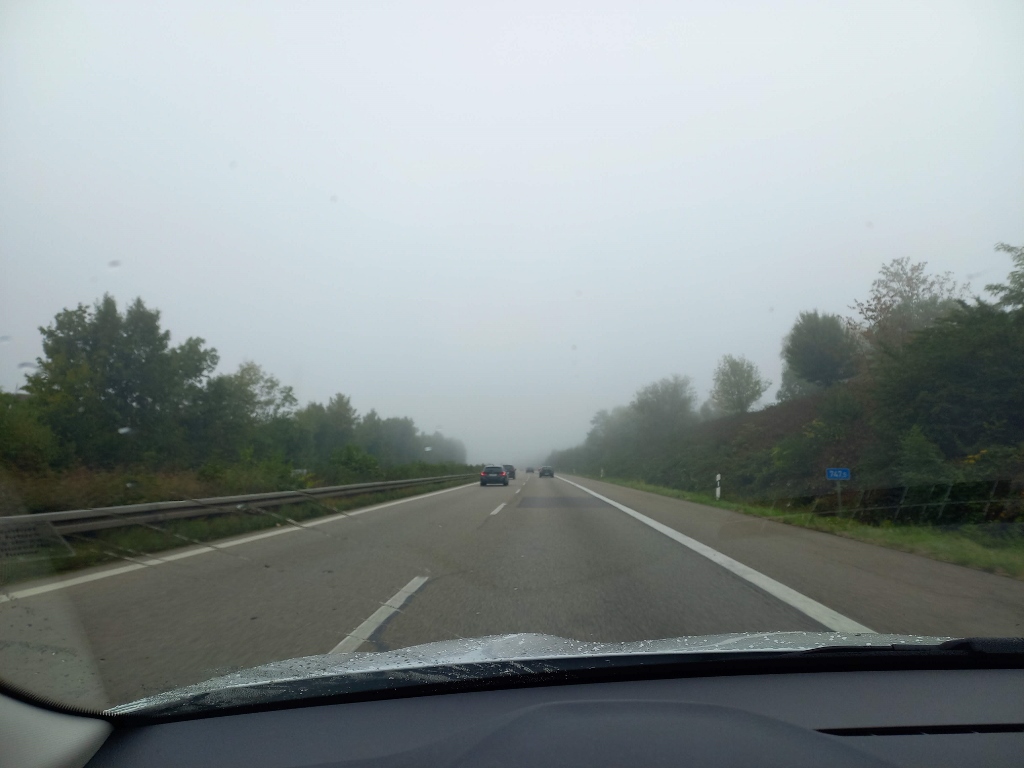 Leaving Germany
Leaving Germany
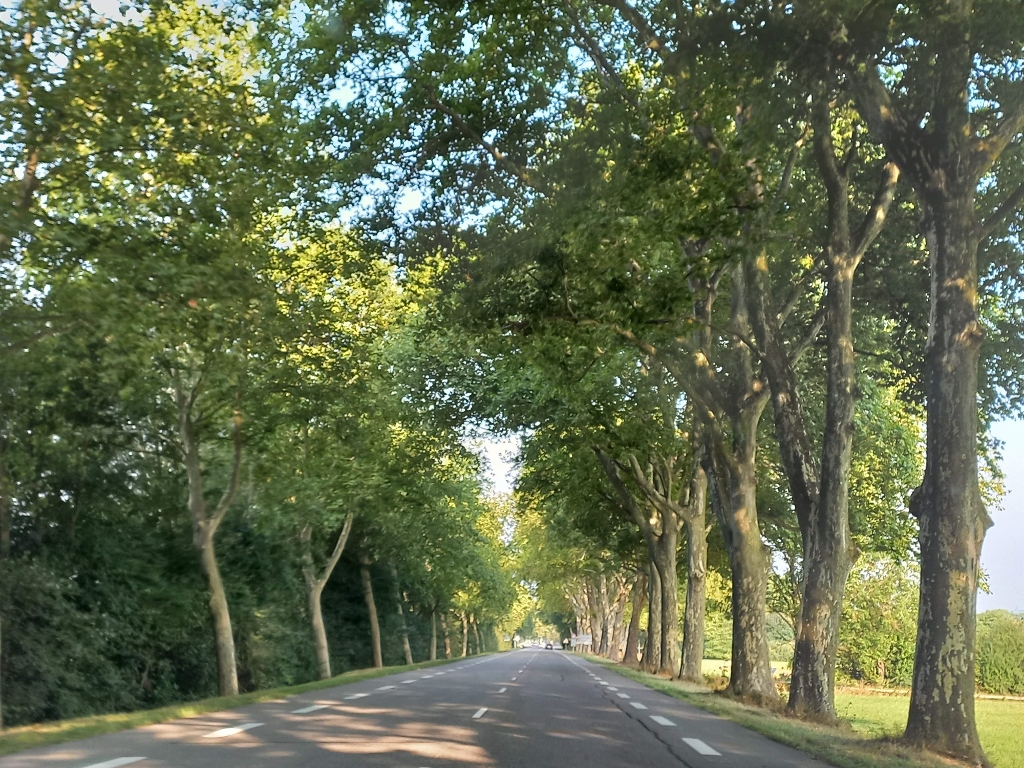 Coming to France
Coming to France
The first place I wanted to visit was Château du Haut-Koenigsbourg. This is practically a fake medieval castle.
Let me clarify this. The first castle was built on a spur of one of the Vosges mountains in Alsace region most likely in the 12th century (the castle was mentioned for the first time in 1147). The owners or the users of the castle kept changing over time and the castle got extended and improved. Up until the Thirty Years’ War and the year of 1633 when it was plundered and burned down. From then on, the castle ruins were simply there, decaying even more and getting overgrown by vegetation, since this is the realm of dense forest.
In the year of 1862, France recognised the ruins as a historical monument, but from 1871 this whole area belonged to Germany. The then ruler, German Emperor William II (Wilhelm II), in order to honour the German civilisation, wanted to restore the castle that was positioned on the western border of the German empire, just as the castle of Marienburg marked its eastern border. By the way, I visited Marienburg castle back in 2017, since nowadays it belongs to Poland and is called Malbork after the name of the place it is located by (see: https://www.svudapodji.com/en/poland-4/).
And so, in line with the wishes of the ruler, the reconstruction started in 1900 and the castle was inaugurated in 1908. However, after WWI and the signing of the Treaty of Versailles, this whole area, the castle included, went again into the hands of the French. Although the castle had been officially recognised as a historical monument, for a number of years the French looked down upon it, regarding it as a result of a vain desire of a German ruler, but nowadays this monument is certainly one of the biggest attractions in this part of the country.
The road that ascends from the foot of the hill through a beautiful forest passes by the castle before starting to descend again. I left the car in one of the marked spots and then started with my sightseeing visit. The section of the castle closest to the road is the Star-shaped bastion.
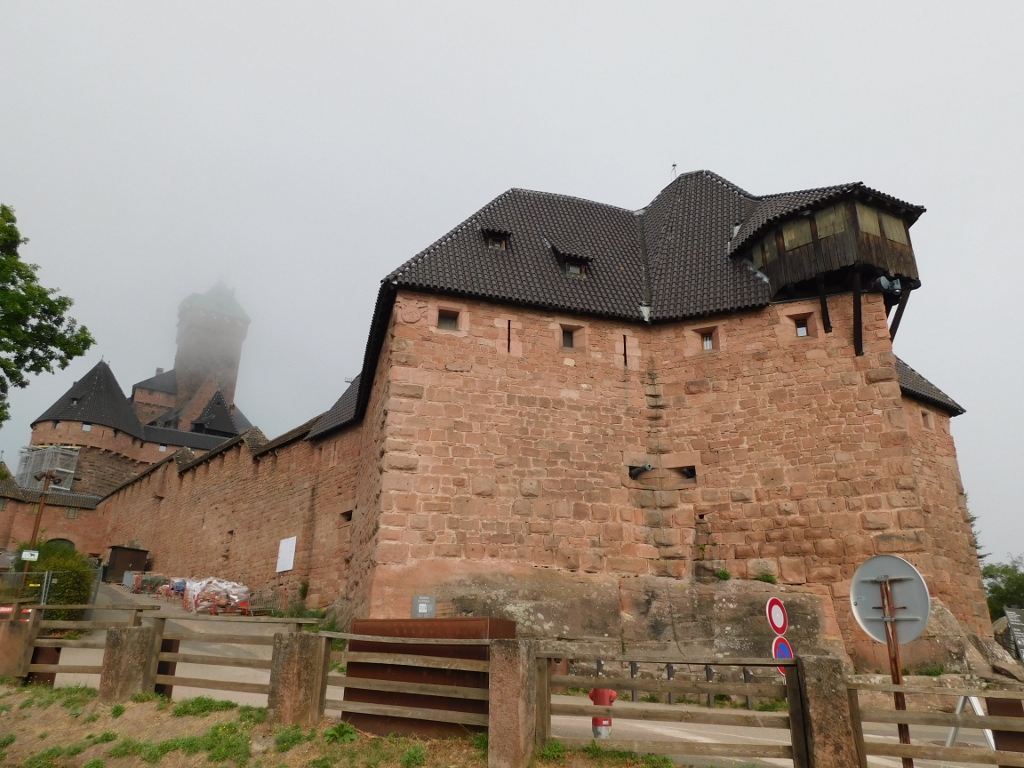 Star-shaped bastion
Star-shaped bastion
It is presumed that this bastion looks exactly like the bastion from the 16th century and since it protrudes along the ridge in relation to the line of the castle that is in its background, it was used as a protection against cannons.
As it may be seen, meanwhile the sky became overcast again, although there was no danger of any rain. By the way, in the photo above it is possible to discern the highest tower, the keep, in the haze and all data suggest that it is now 14 m higher than it originally used to be. The point is that the reconstruction was mostly accurate and the main architect did stick to the historical data, but in some spots there were nonetheless certain interventions that were not necessarily based on historic documents. Emperor William II himself came here often and voiced out his ideas and proposals about what some of the solutions should look like, so certain modifications were introduced in line with that. Still, the castle is indeed a good reconstruction to a large degree and it is very interesting for a nice visit.
I first started to go around it from the outside. Thus, at some point I could see nicely both the keep and the windmill placed on the top of a lower tower.
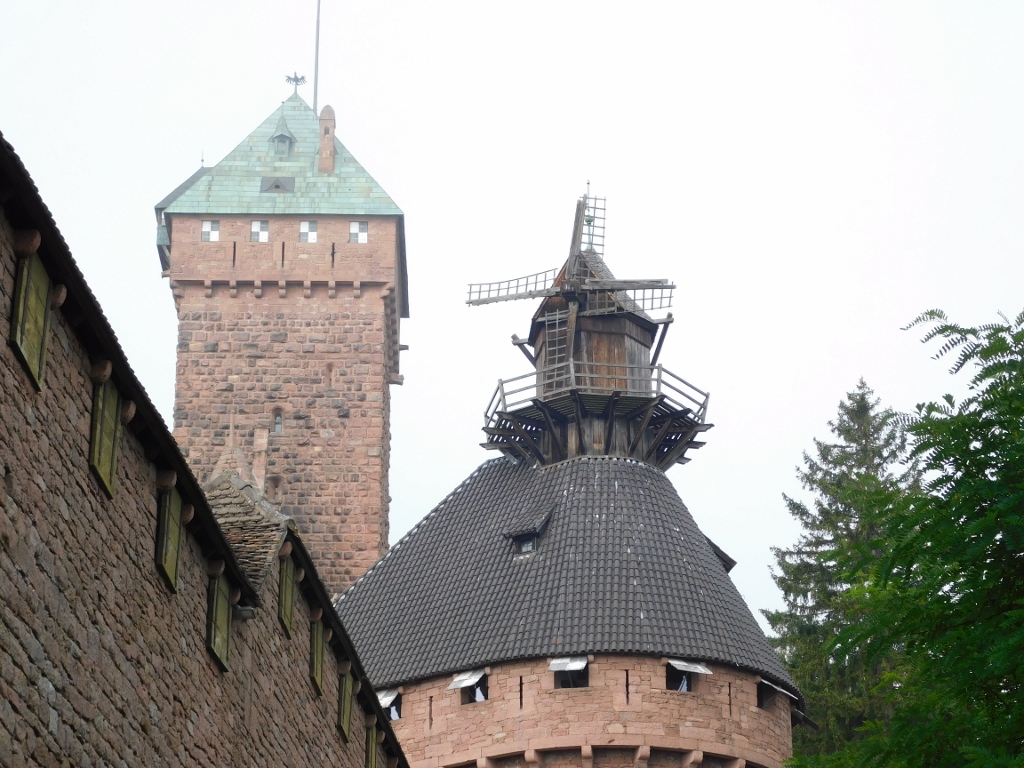 Château du Haut-Koenigsbourg, a detail
Château du Haut-Koenigsbourg, a detail
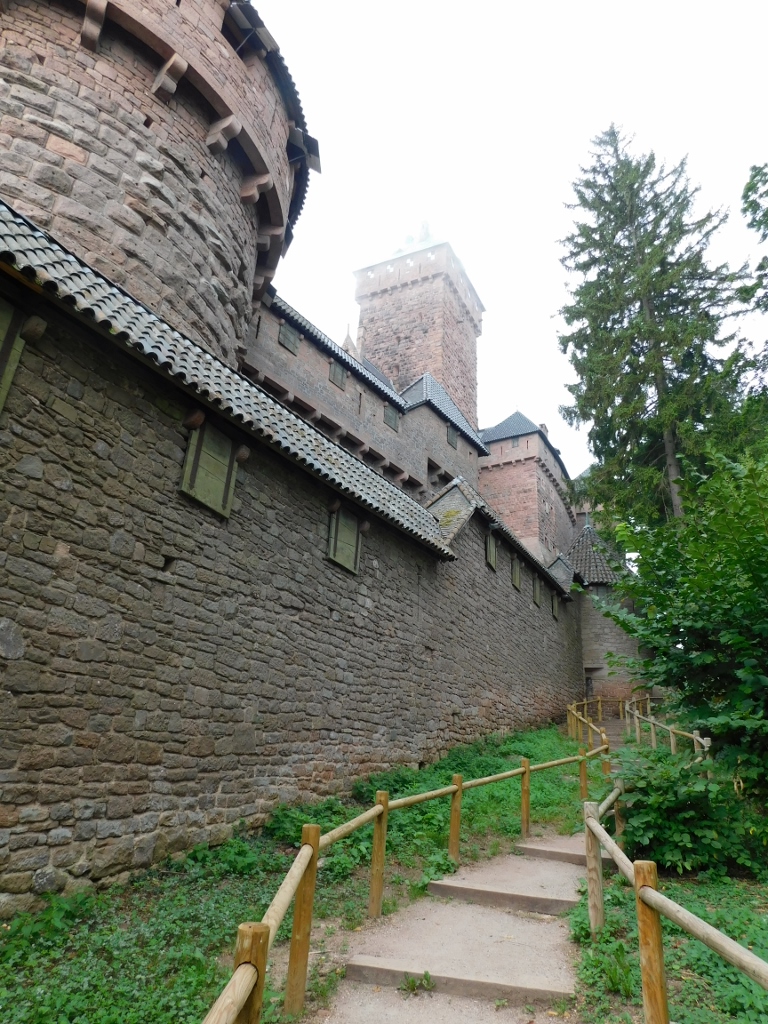 Château du Haut-Koenigsbourg, a detail
Château du Haut-Koenigsbourg, a detail
In one section, where the narrow path leads between the ramparts of the castle and the surrounding forest, it was very quiet and I could not hear any sound emanating from humans or human activities of the 21st century, so for a moment I had an impression as if I had returned to the Middle Ages. It is very easy to presume that this spot looked identically in those times.
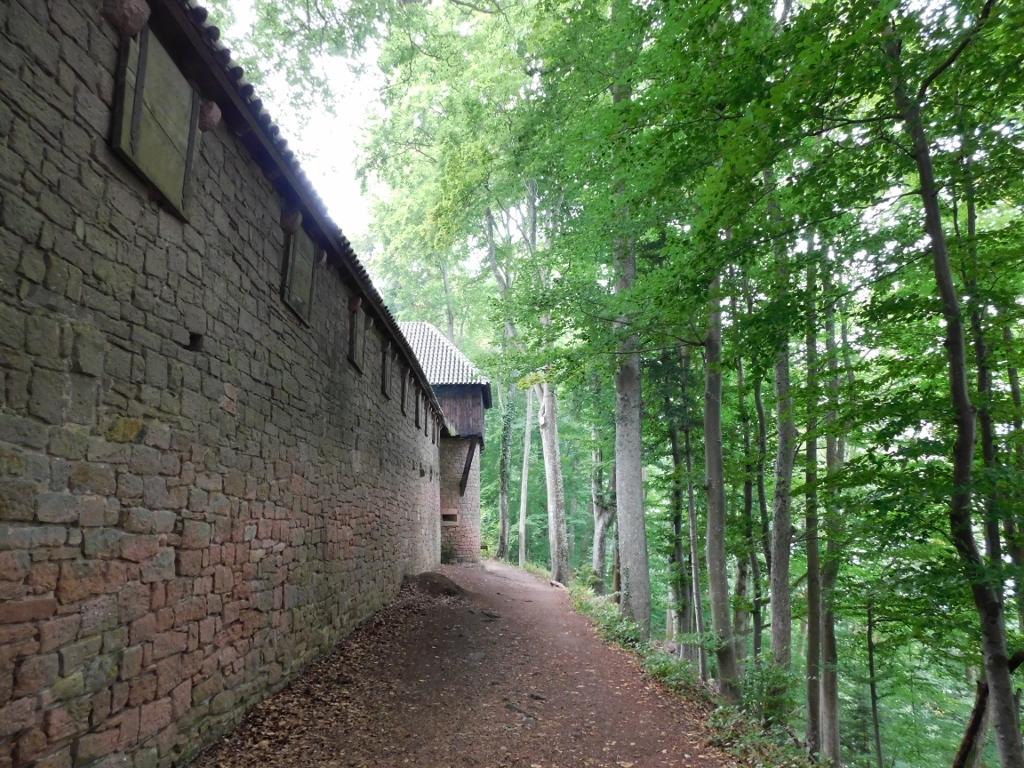 Château du Haut-Koenigsbourg, a detail
Château du Haut-Koenigsbourg, a detail
And so I came to the end of the path from where I could see yet another tower and a plot of land at its base and then, making a whole circle, I reached the entrance into the castle as well.
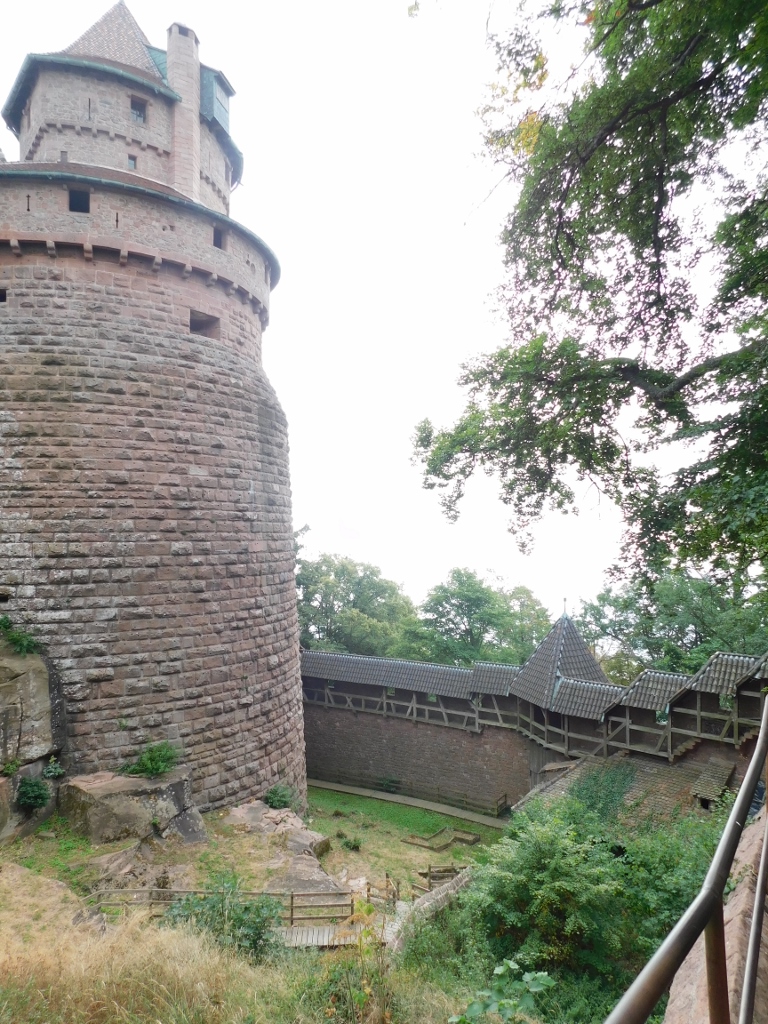 Château du Haut-Koenigsbourg, a detail
Château du Haut-Koenigsbourg, a detail
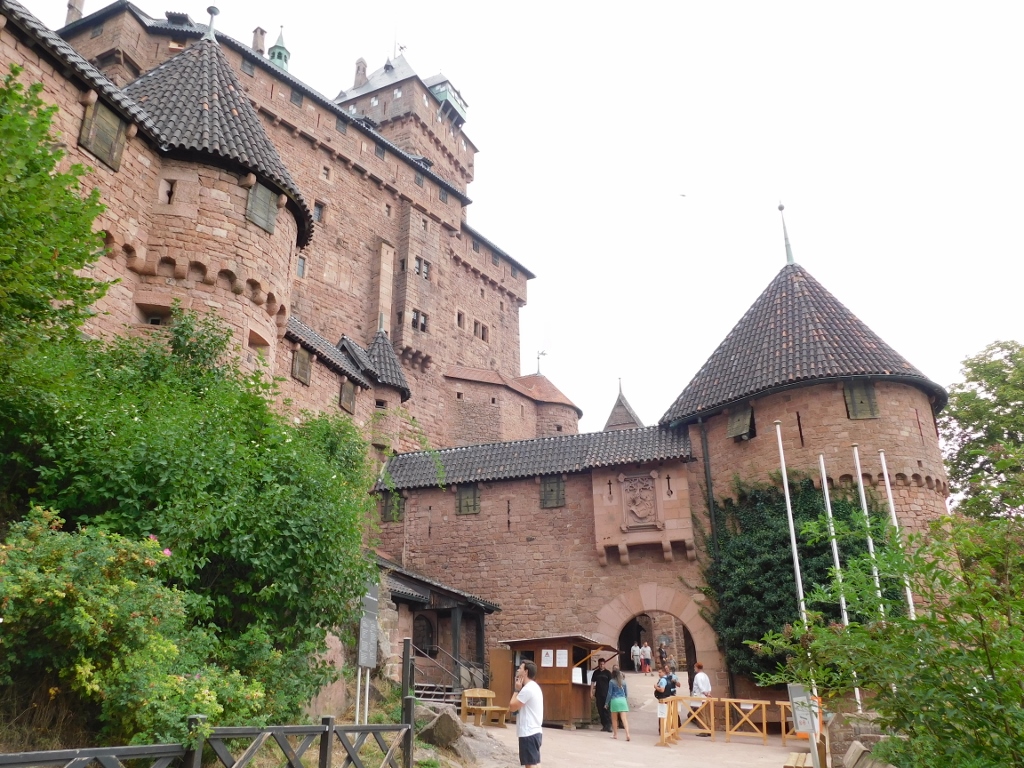 Château du Haut-Koenigsbourg, the entrance into the castle area
Château du Haut-Koenigsbourg, the entrance into the castle area
I will not go into too many details about the castle now, leaving it rather to the photos to speak for themselves with only a few shorter comments. What I can certainly say at this point though is that the walk through the castle was very interesting.
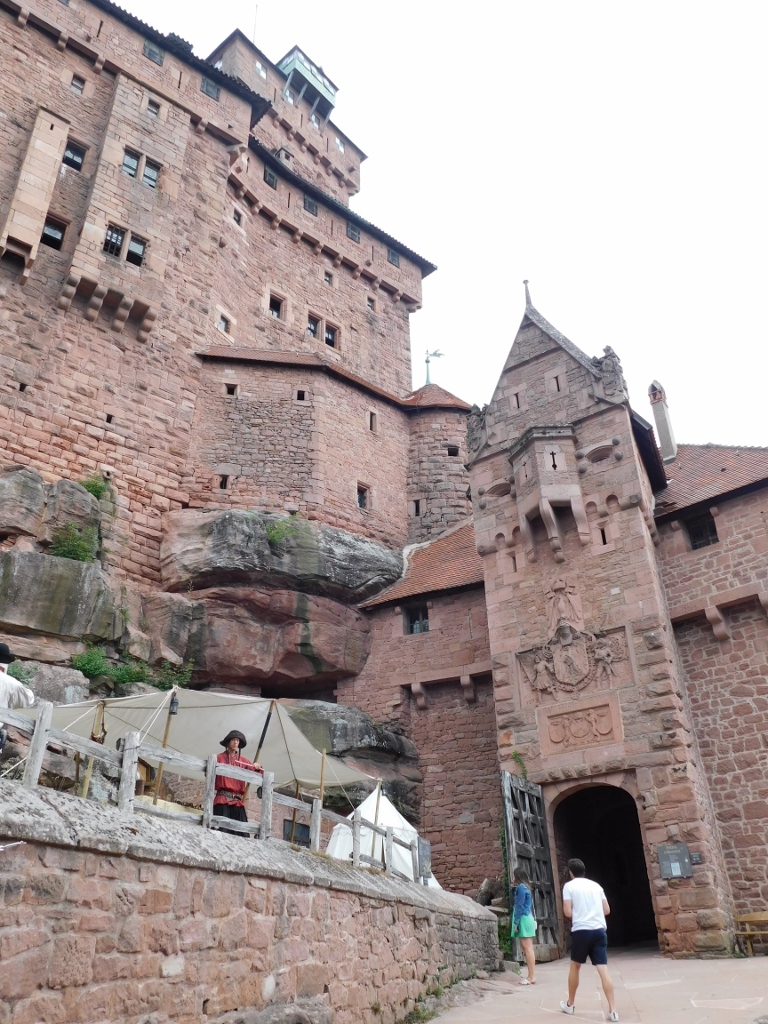 Château du Haut-Koenigsbourg, forecourt and the main gateway
Château du Haut-Koenigsbourg, forecourt and the main gateway
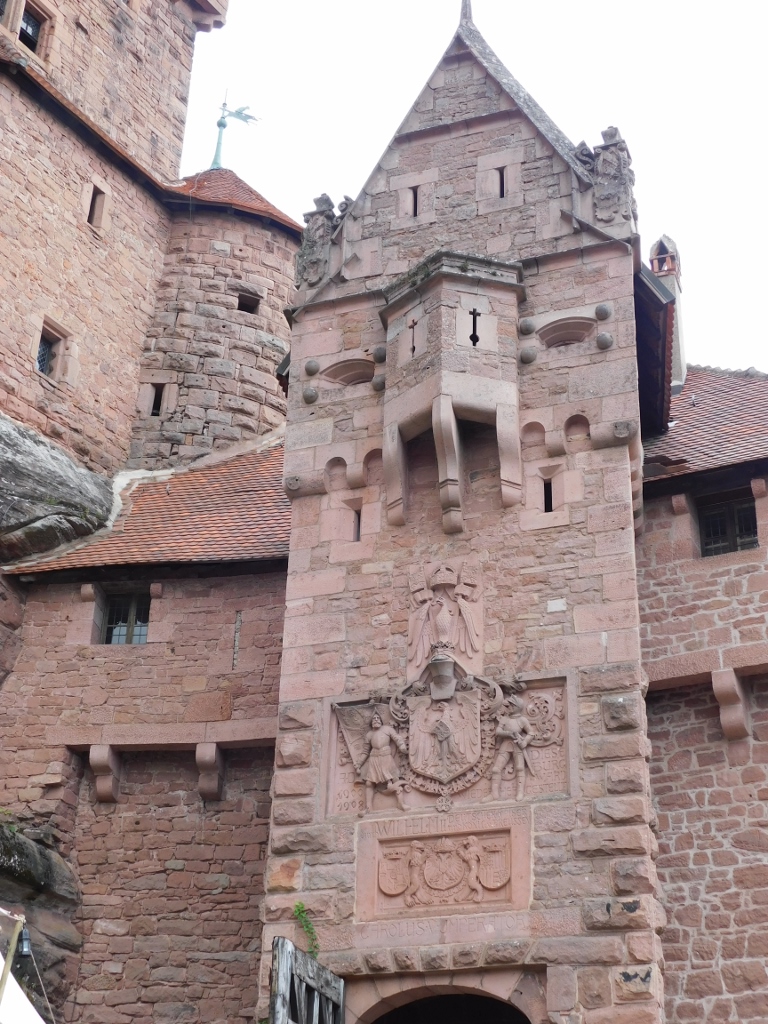 Château du Haut-Koenigsbourg, the main gateway
Château du Haut-Koenigsbourg, the main gateway
I like to note some minor details, such as two interesting elements on the south facade that can be seen in the photo below.
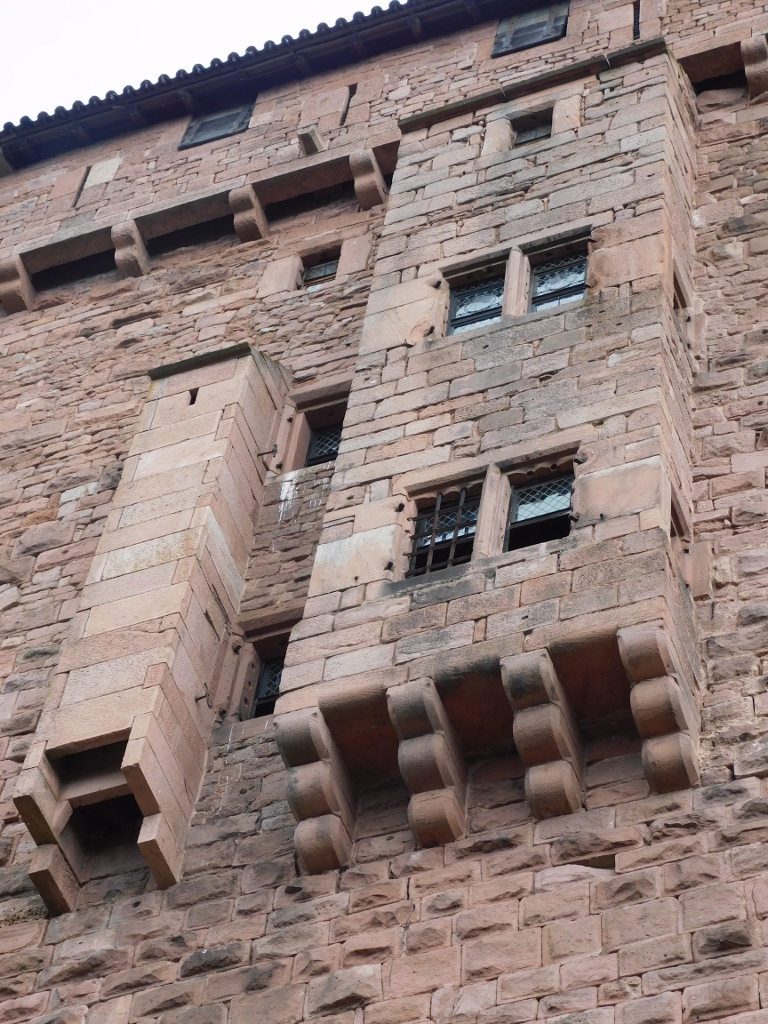 Château du Haut-Koenigsbourg, a detail
Château du Haut-Koenigsbourg, a detail
To the left, there is a latrine with an opening on the bottom side, while to the right there is a kind of an oriel. Both elements were originally made after 1479.
As you continue further, you come to a courtyard where you can see nicely the windmill built on the top of a building that looks like a smallish tower.
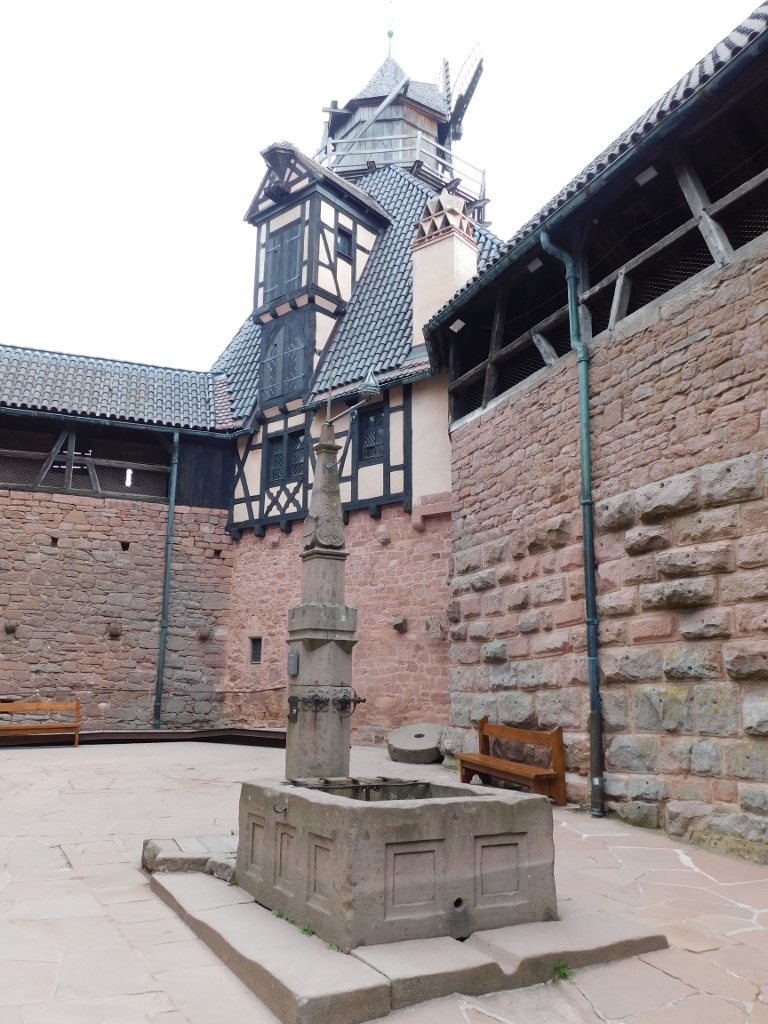 Château du Haut-Koenigsbourg, a detail
Château du Haut-Koenigsbourg, a detail
When the visitor looks around this courtyard, they can see some other parts as well. For instance, the former inn and stables mentioned in the 16th century. In the photo below, these are the buildings made in the half-timber style which are nowadays used as the venue for selling entrance tickets. On the right-hand side, there is the entrance into the castle and this is where the visit to the castle continues.
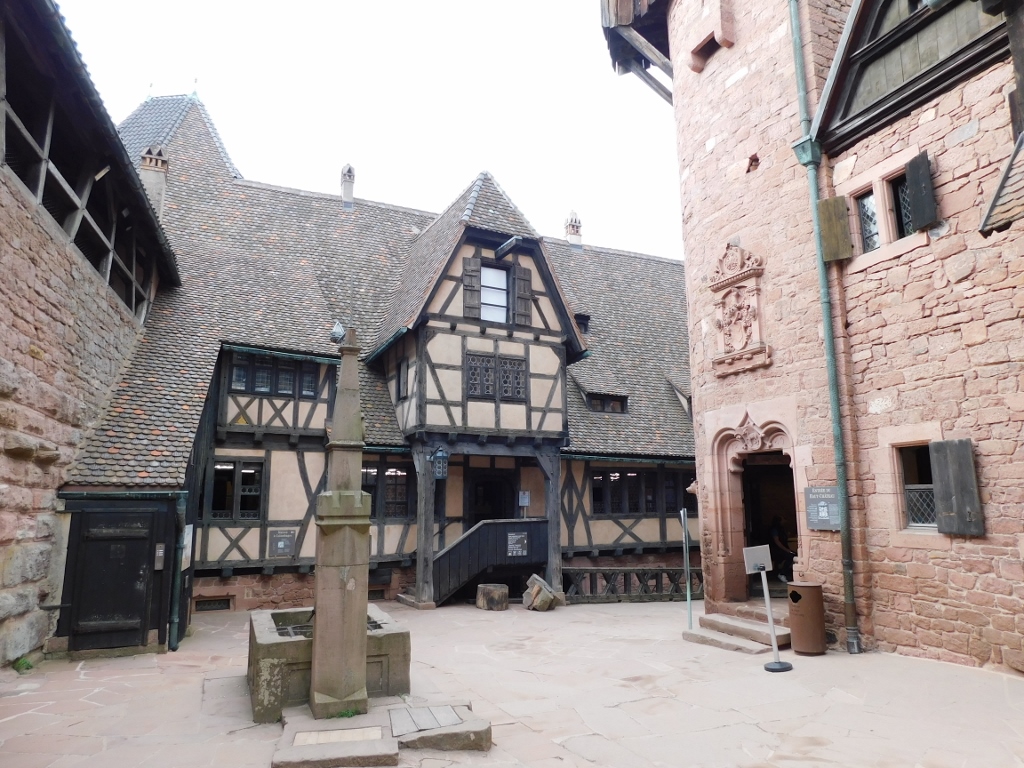 Château du Haut-Koenigsbourg, a detail
Château du Haut-Koenigsbourg, a detail
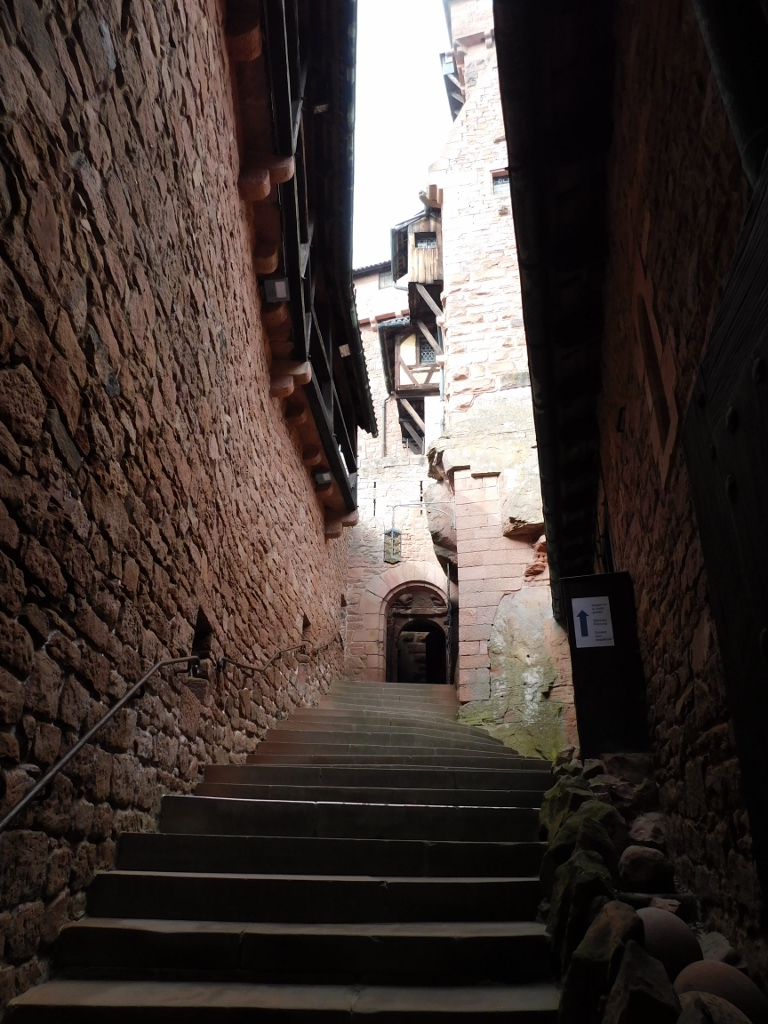 Château du Haut-Koenigsbourg, a detail
Château du Haut-Koenigsbourg, a detail
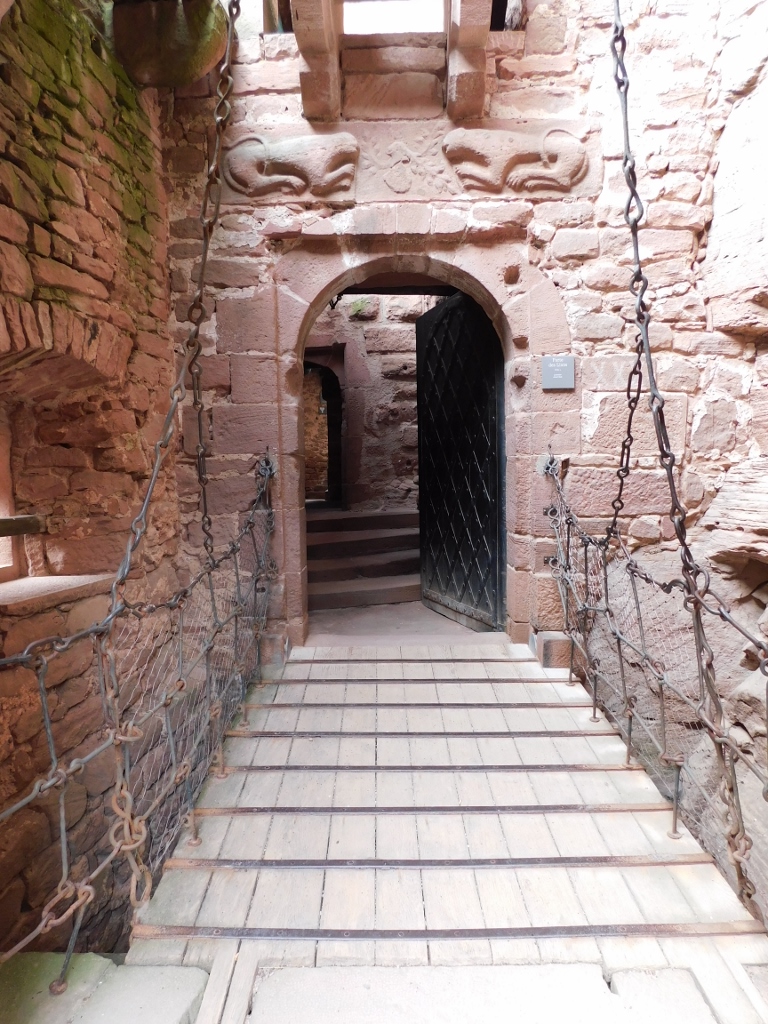 Lion’s Gate, 12th century
Lion’s Gate, 12th century
The visit leads further beside a well and it needs to be said that either wells or cisterns can be spotted in several places within the castle, since it was certainly necessary to provide water, especially in case of long sieges. The one seen in the photo below is 62 m deep and because of the exposure to the artillery fire, a tower was built around the well in 1569 in order to protect it.
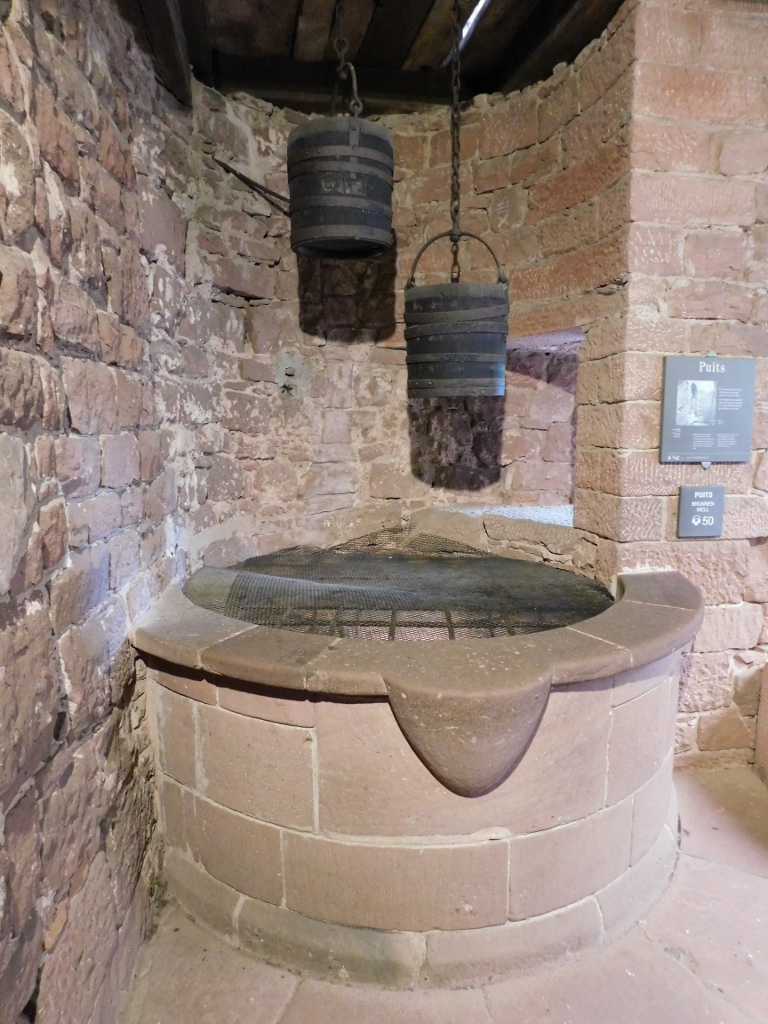 Well
Well
Soon you get to the Upper Courtyard around which there is a kitchen, a water tank, as well as a lovely round staircase leading to the residential quarters of the castle. It is interesting that this tank provided water supply either thanks to the rainfall that was brought to it by pipes or by collecting rainfall in some other places and physically bringing it here.
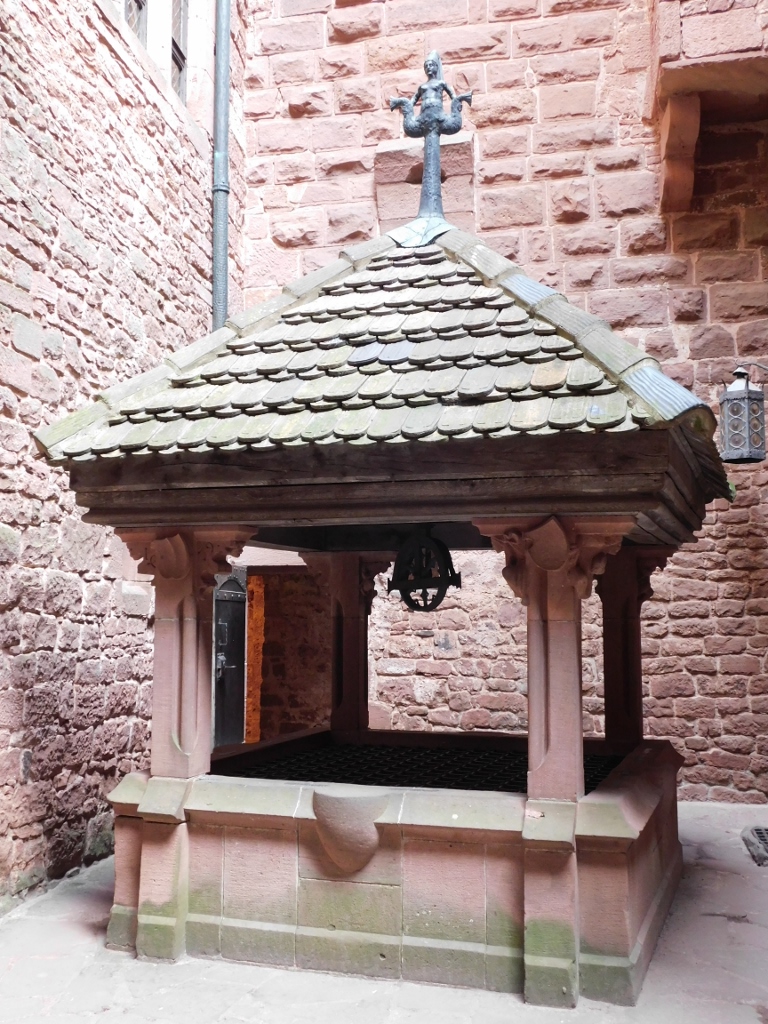 Water tank
Water tank
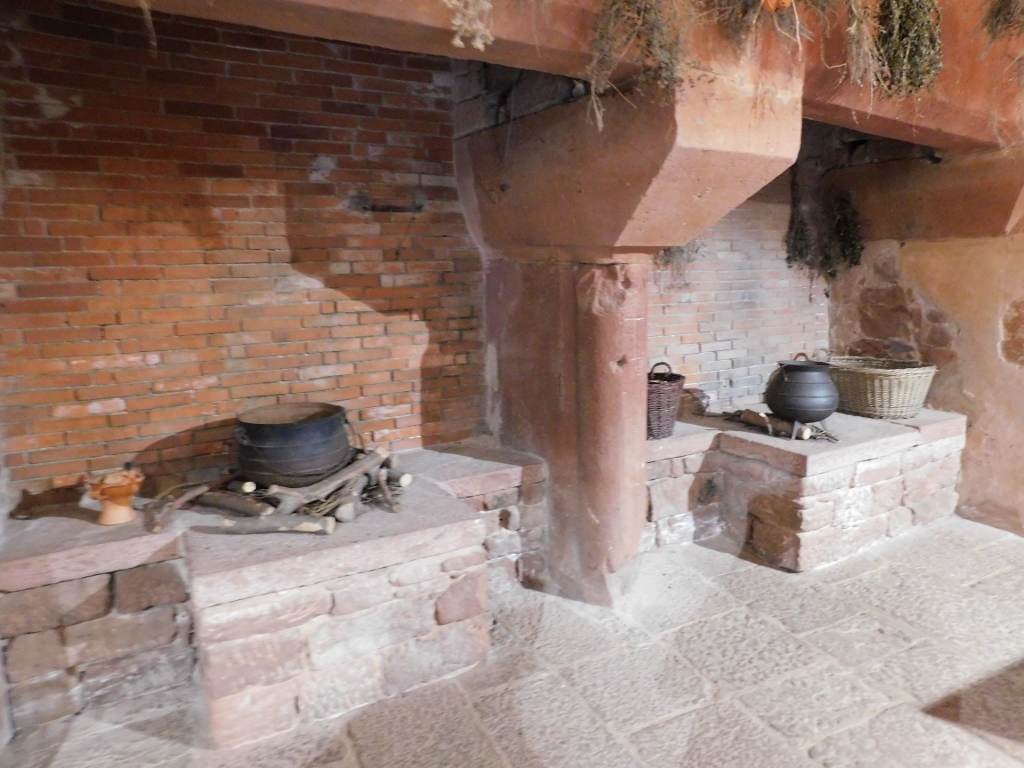 Kitchen
Kitchen
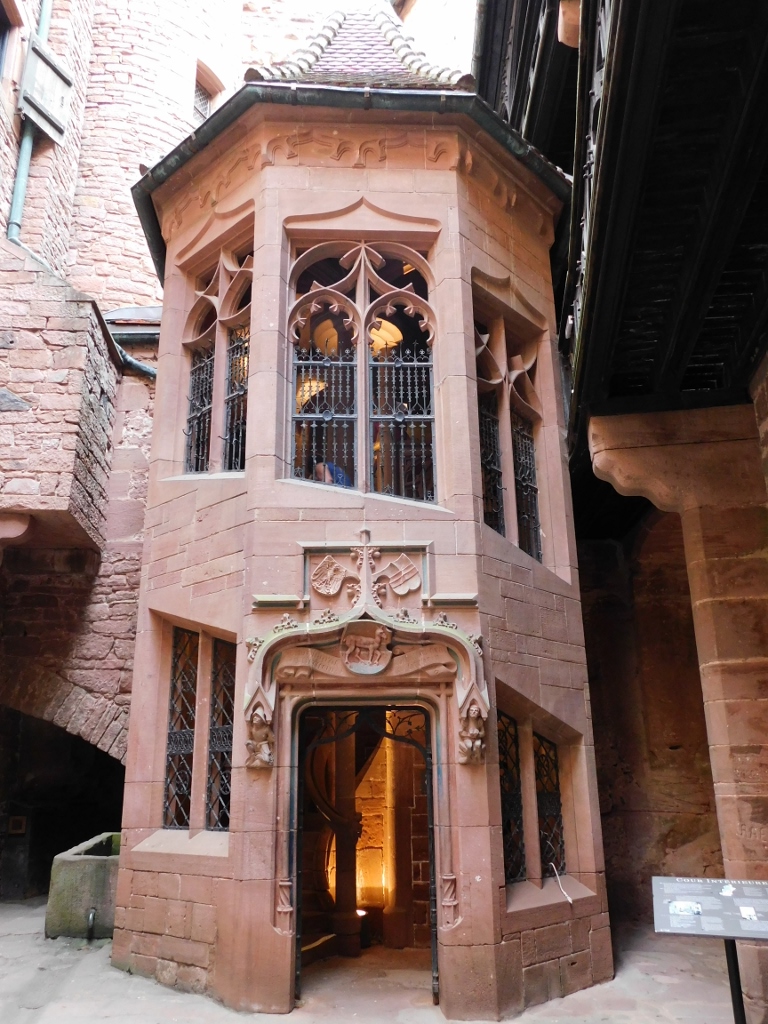 Round staircase
Round staircase
When I went to the upper storey using the staircase, first I looked out of a window in order to have a better view at the courtyard and some of its parts, and then I continued with my visit to the interior sections of the castle.
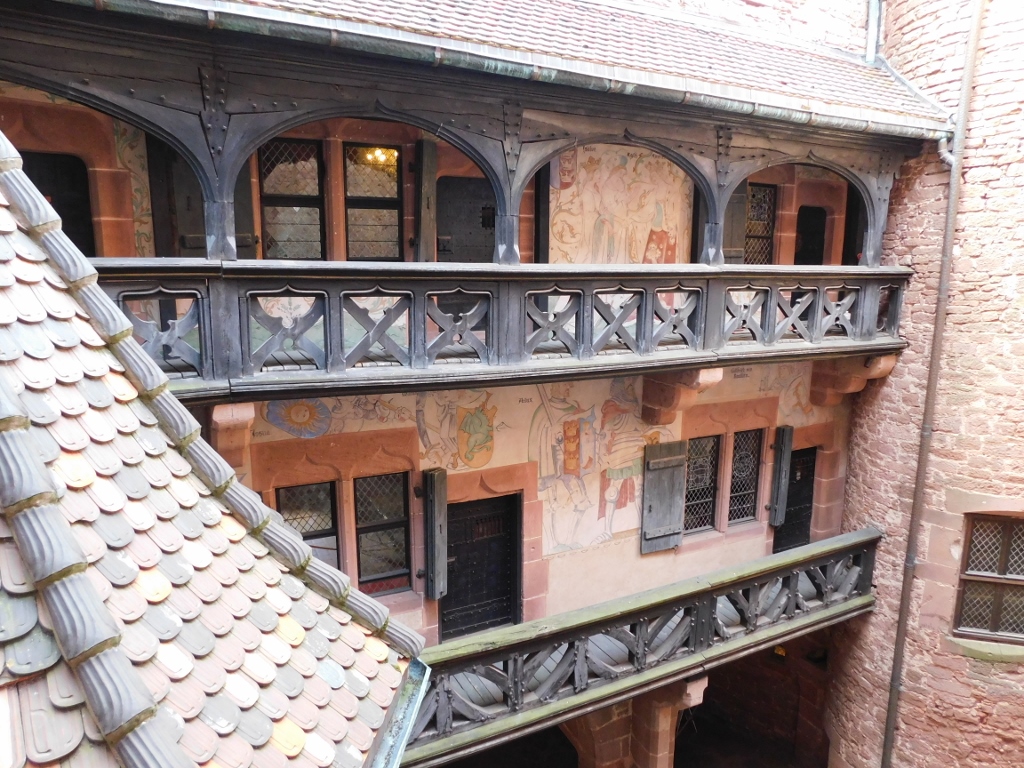 Higher sections of the Upper Courtyard
Higher sections of the Upper Courtyard
By the way, there are stairs leading from this courtyard to the top of the keep, but during my visit it was not possible to go to that area.
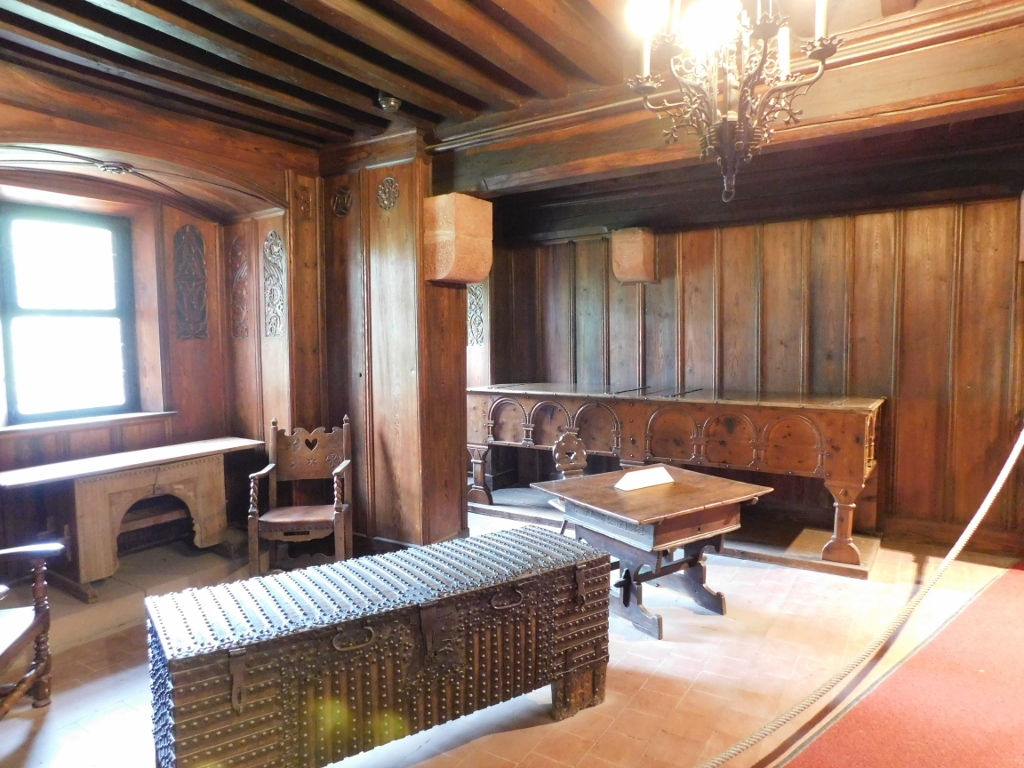 Château du Haut-Koenigsbourg, a detail
Château du Haut-Koenigsbourg, a detail
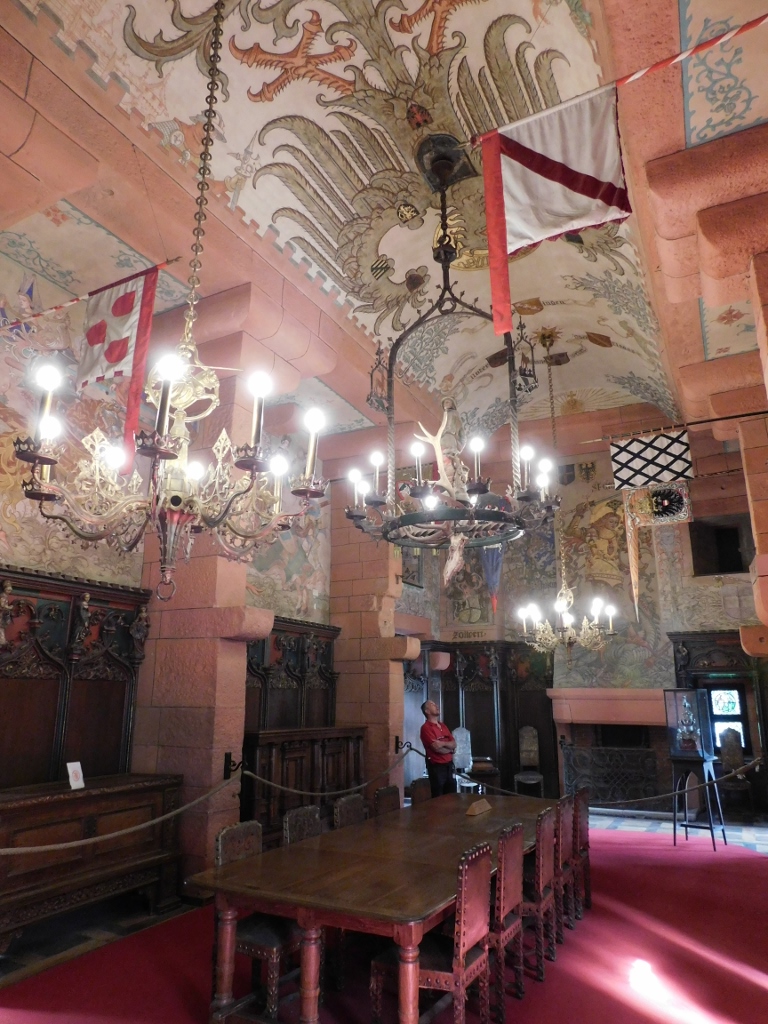 Château du Haut-Koenigsbourg, a detail
Château du Haut-Koenigsbourg, a detail
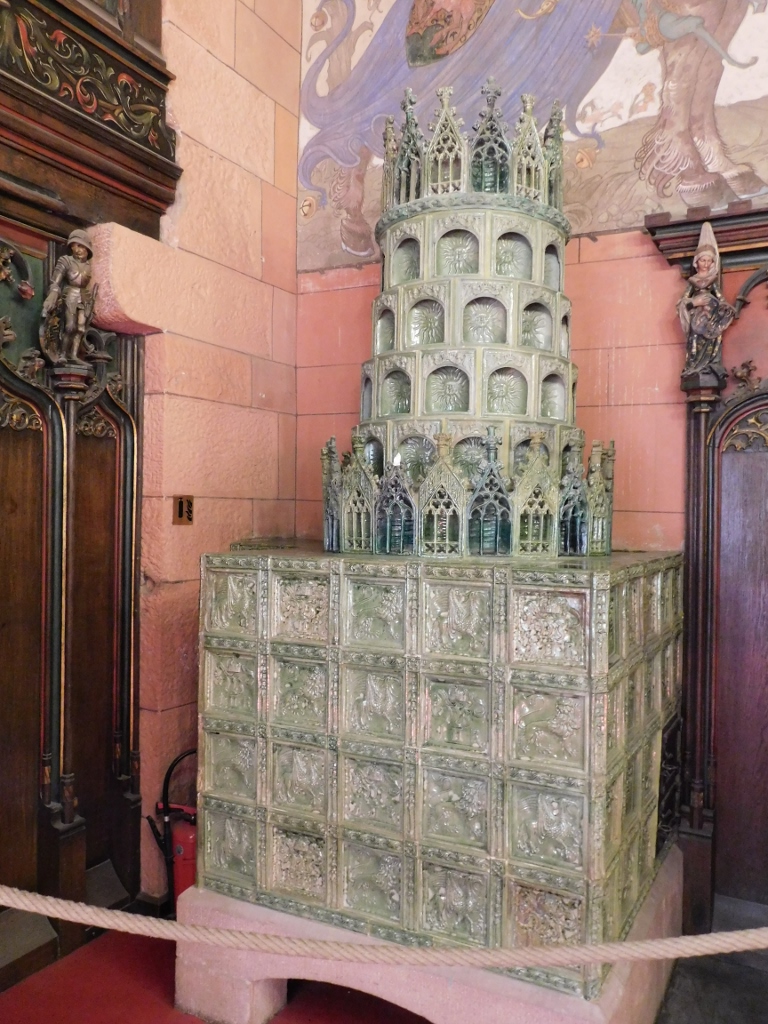 One of the numerous tiled stoves within the castle
One of the numerous tiled stoves within the castle
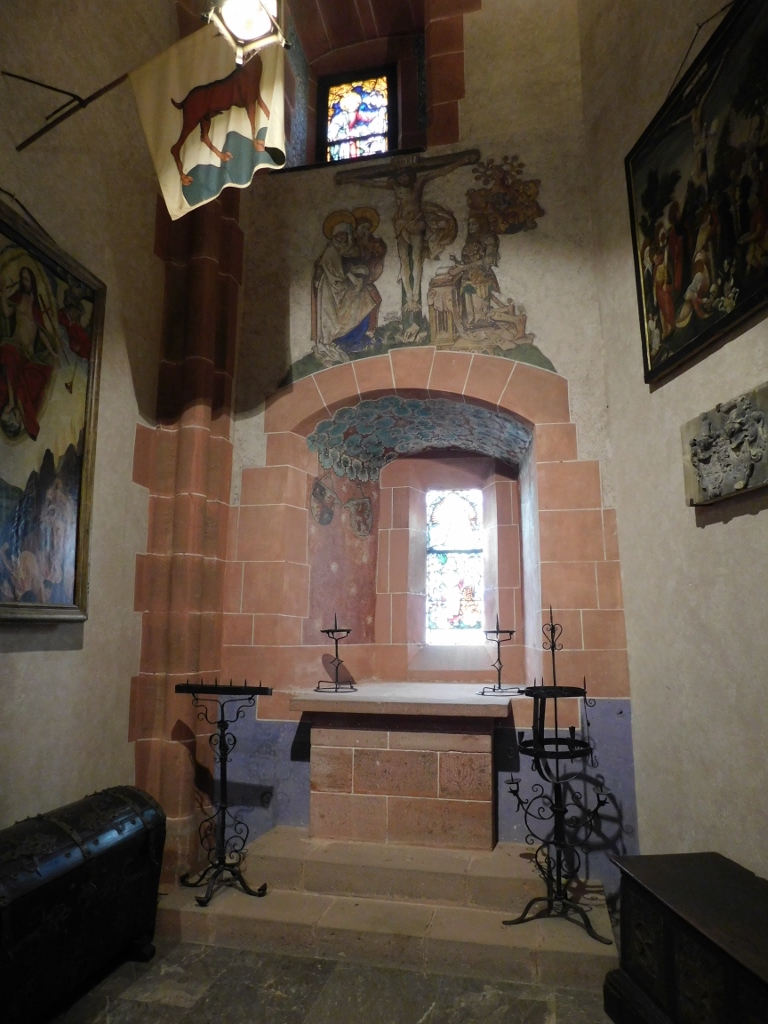 Small chapel within the castle
Small chapel within the castle
The visiting path then takes you over a small bridge leading to yet another spacious courtyard.
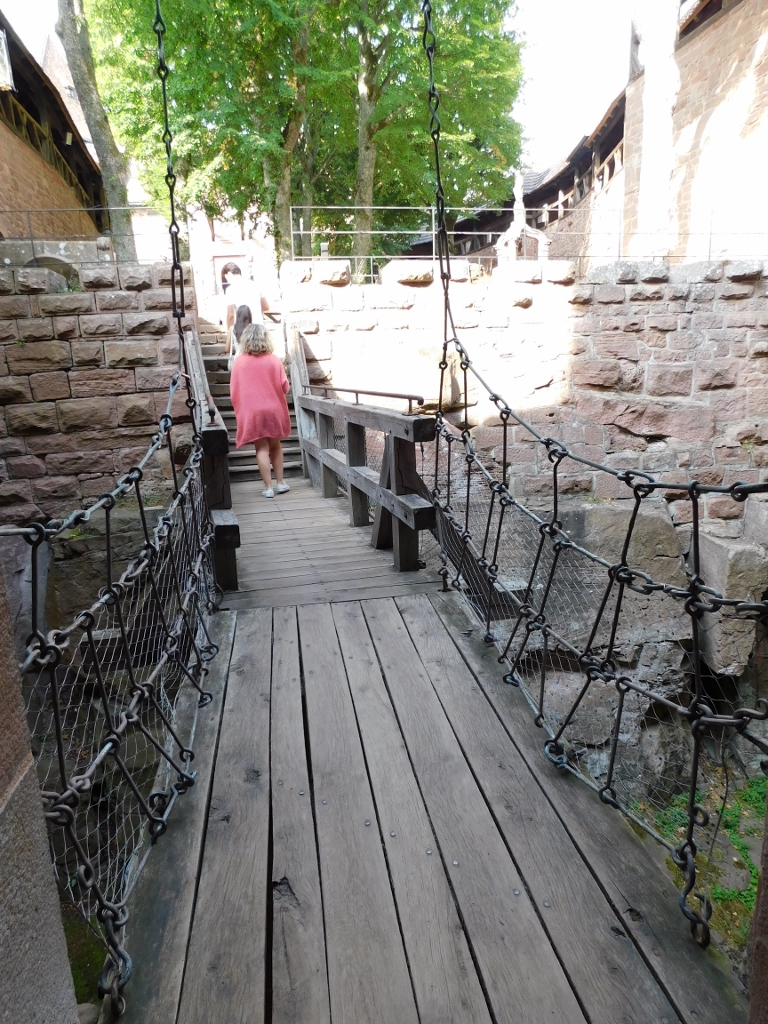 Bridge within the castle
Bridge within the castle
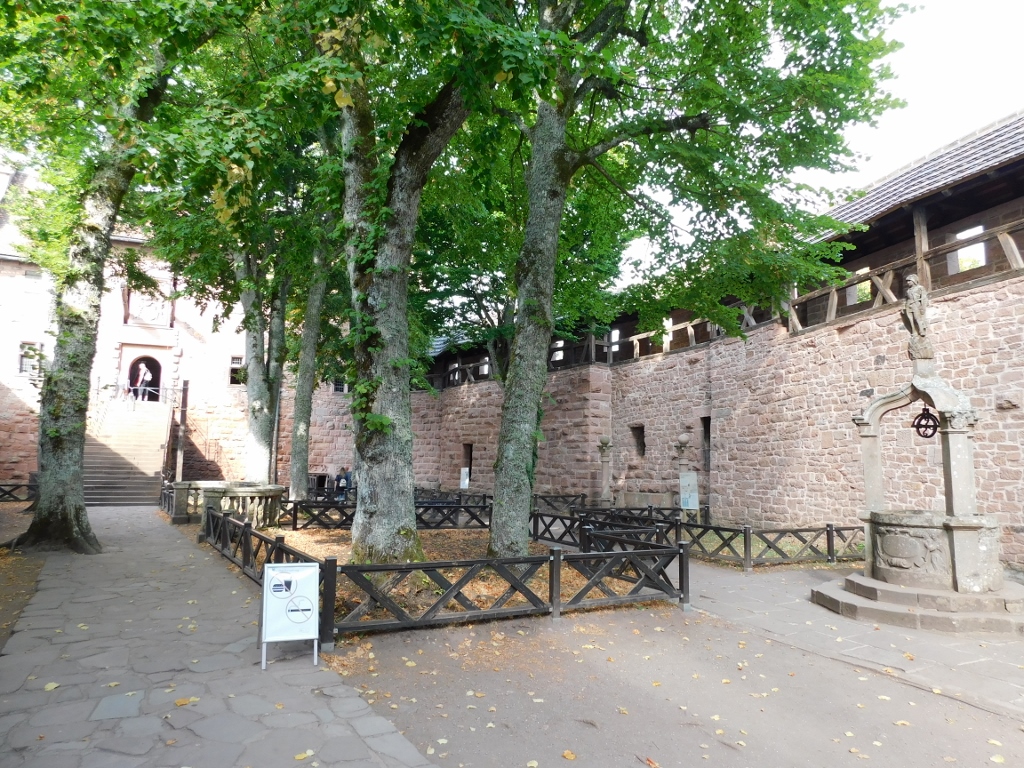 Spacious courtyard
Spacious courtyard
In the photo above, it is possible to see a well on the right-hand side, but this is just a part of a huge underground water tank system that could store around 82,000 litres of water! Namely, such large quantity of water was required in case there was a need to extinguish fire at the castle, plus the water was potable. This was achieved by filtering the rainfall through stones and sand.
The sightseeing then continues with the visit to the Grand Bastion. The bastion area is entered via a staircase that starts from the courtyard, while from the top of the stairs you can also see the courtyard very nicely.
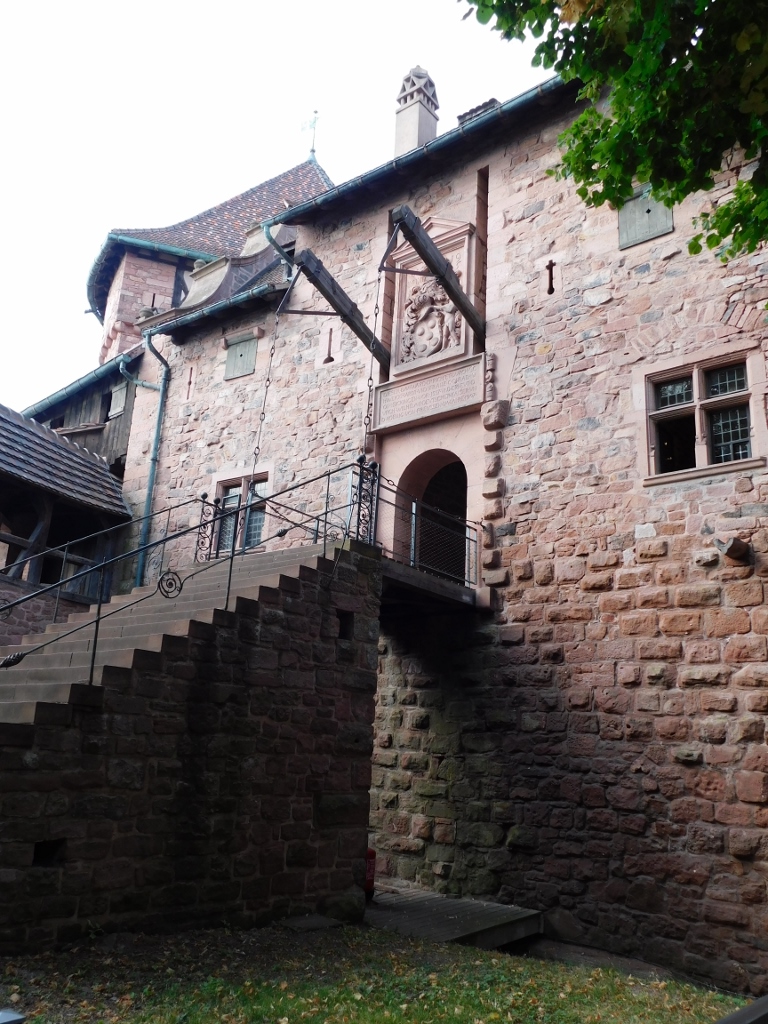 Staircase leading to the Grand Bastion
Staircase leading to the Grand Bastion
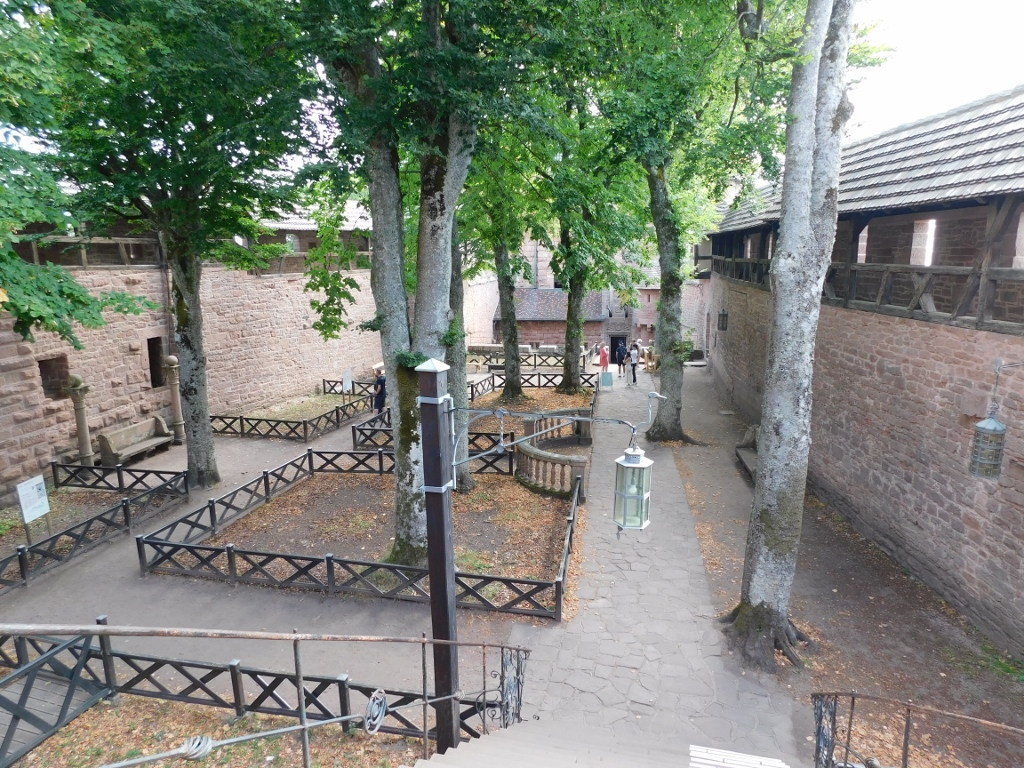 View at the spacious courtyard
View at the spacious courtyard
The Grand Bastion was the most vulnerable part of the château and it consists of two towers and ramparts. This is precisely the section around which I walked at the very beginning of my visit. Now, from the top, I could see the path that I went along, as well as the exterior courtyard on the west side of the castle.
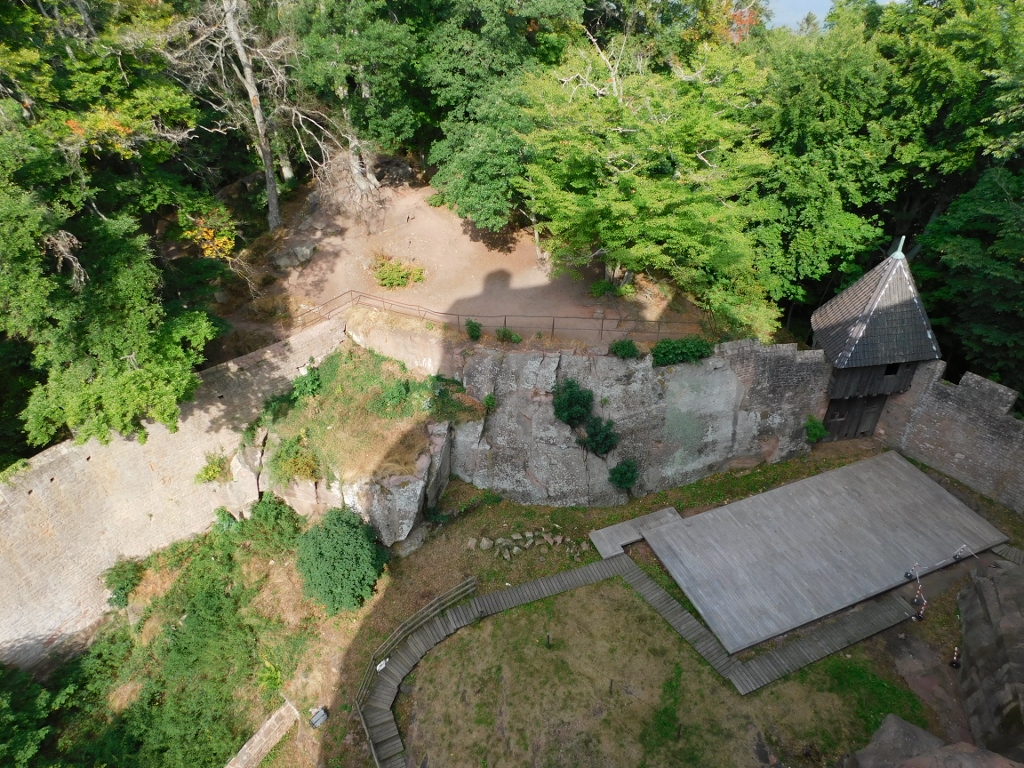 View at the path around the castle and the west courtyard
View at the path around the castle and the west courtyard
But, the whole area surrounding the castle can also be seen nicely from here.
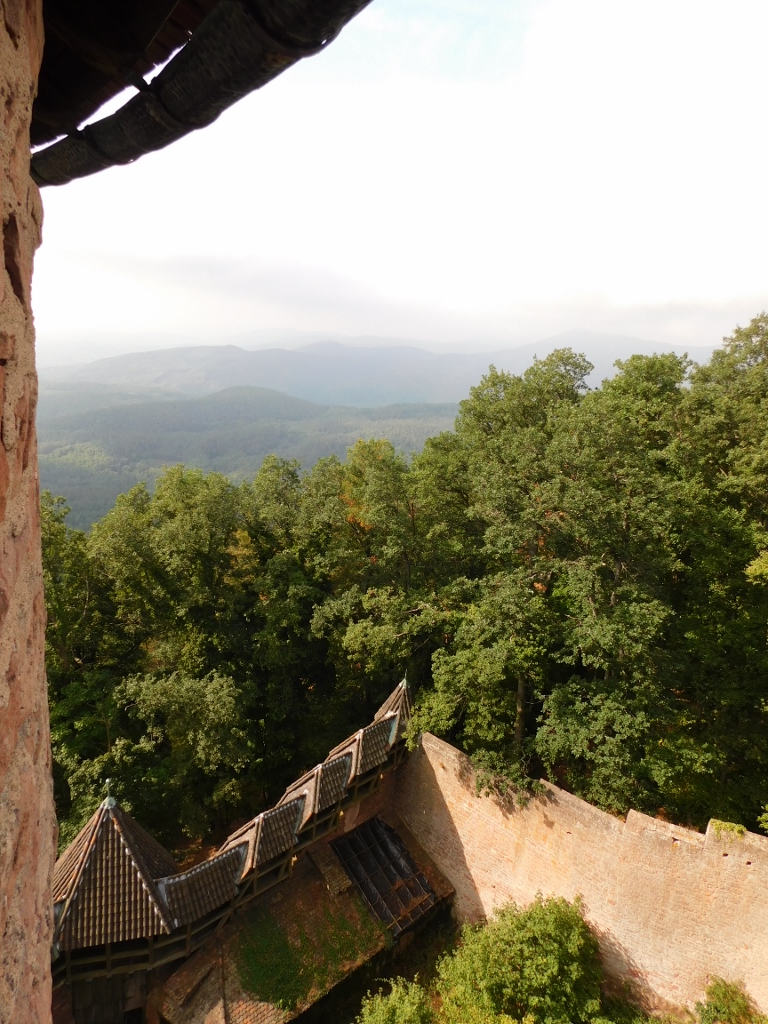 View at the surroundings of the Grand Bastion
View at the surroundings of the Grand Bastion
The next photo is not good in technical terms, but it does provide an illustration about the view at the surroundings that can be seen from a window of the Grand Bastion. I did hope that the clouds would disperse during my visit, but that did not happen and this influenced the light within the photo.
 Surroundings of the Château du Haut-Koenigsbourg
Surroundings of the Château du Haut-Koenigsbourg
From here it is also possible to see different parts of the castle, including also the keep.
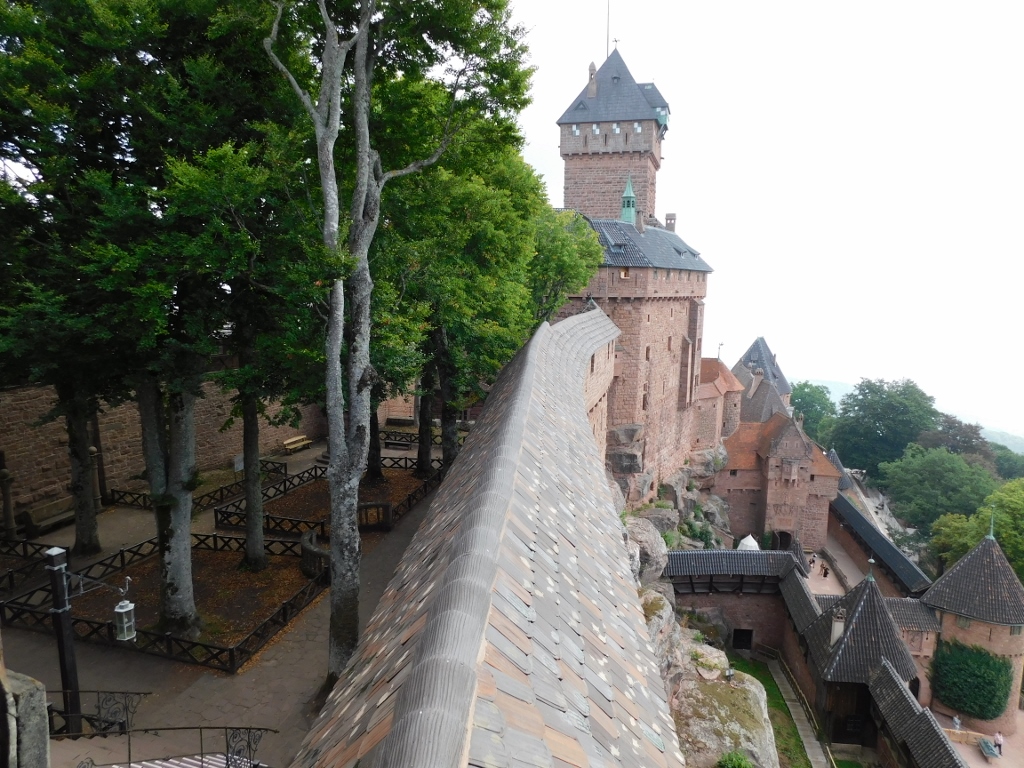 Château du Haut-Koenigsbourg
Château du Haut-Koenigsbourg
After this, I headed for the exit from the castle, occasionally walking through some other, side sections of the entire complex, and soon enough I started to descend by car from the hill entering the area full of vineyards.
 Surroundings of the Château du Haut-Koenigsbourg; the castle can be seen on the top of the hill on the right-hand side
Surroundings of the Château du Haut-Koenigsbourg; the castle can be seen on the top of the hill on the right-hand side
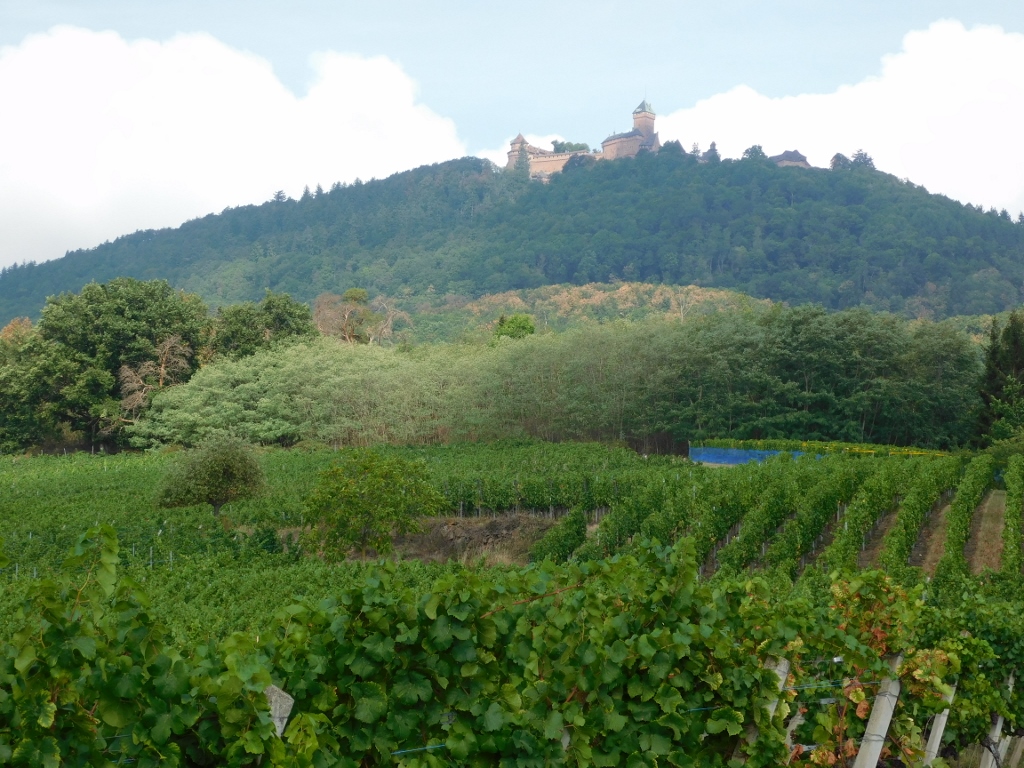 Surroundings of the Château du Haut-Koenigsbourg
Surroundings of the Château du Haut-Koenigsbourg
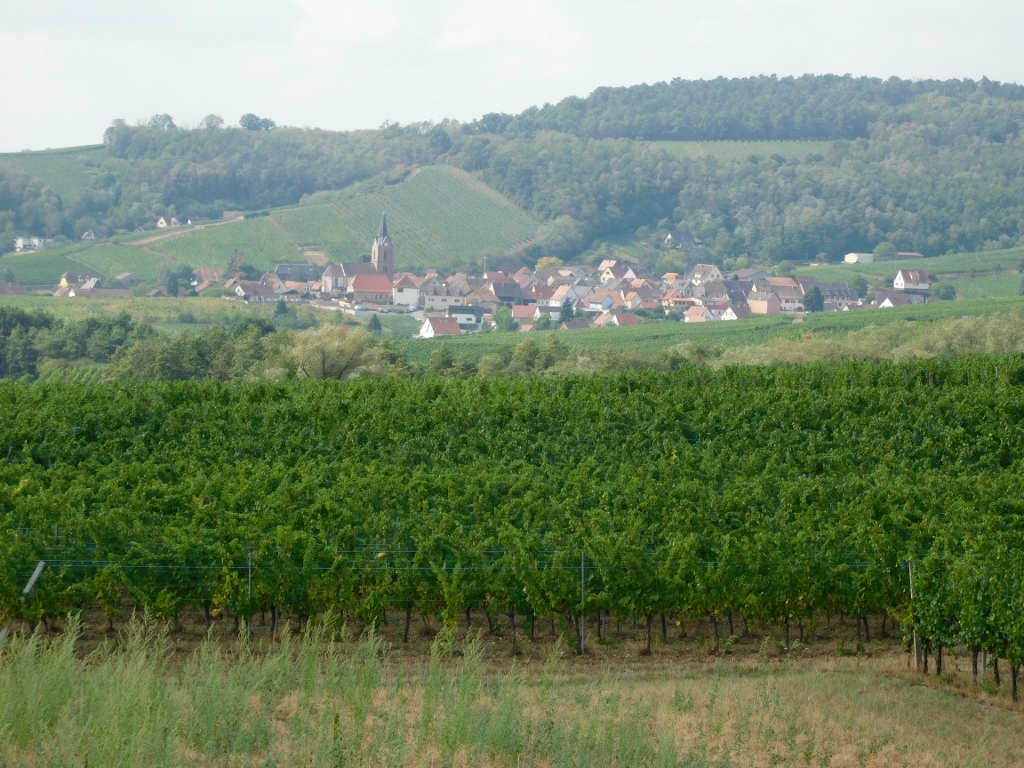 Surroundings of the Château du Haut-Koenigsbourg
Surroundings of the Château du Haut-Koenigsbourg
Although the previous photo shows a village in the middle of these vast vineyards (this is a part of the Route des Vins, but more about it a little later), now I was heading for a very special place. The materials I used for this journey said that the place which was my next destination, Riquewihr, was apparently rather pretty and important enough to be visited. I had not looked for any photos of this small town in advance, so I was oblivious as to what I may be up against and I was even slightly confused since I was driving along the way through some other smaller places that seemed magical. I did not have the time to make any stops in them, but I did wonder what this Riquewihr was like when these other places were so lovely.
Since Riquewihr is located on a mild slope and as it happened I found a parking spot on the “upper” side of the old town, I approached the main street from the “back” or rather the west side.
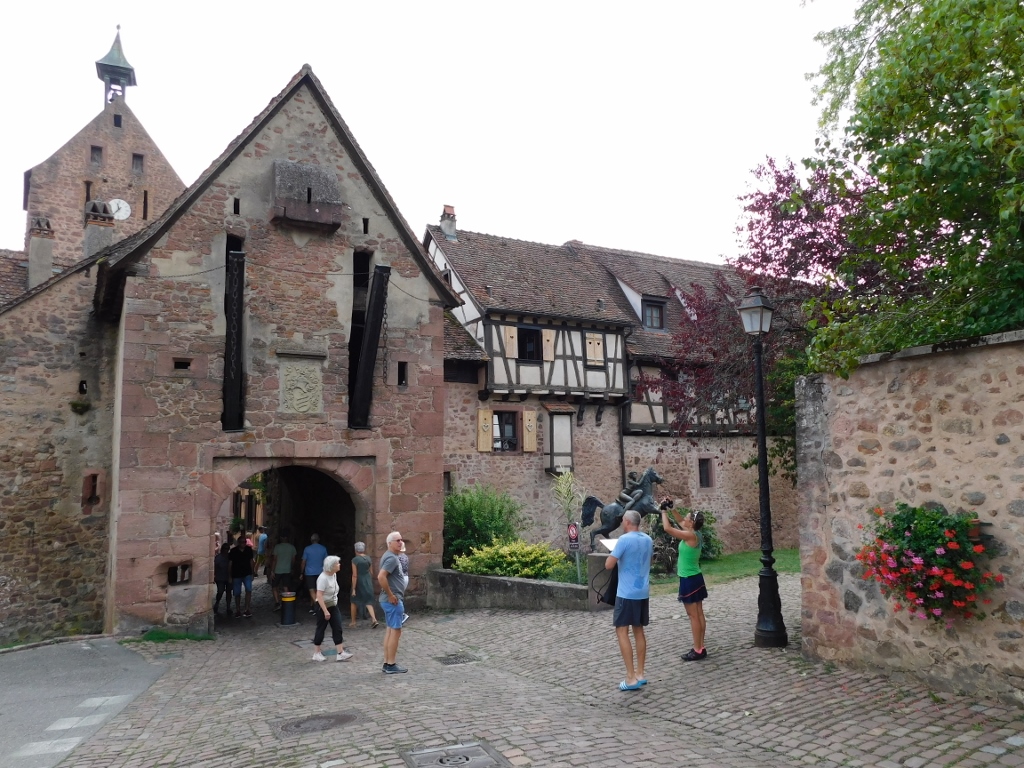 Riquewihr
Riquewihr
Already the ramparts that surround the old part of the town were exceptionally picturesque and interesting. And then, through a gate, I could see parts of the main street. My jaw almost dropped.
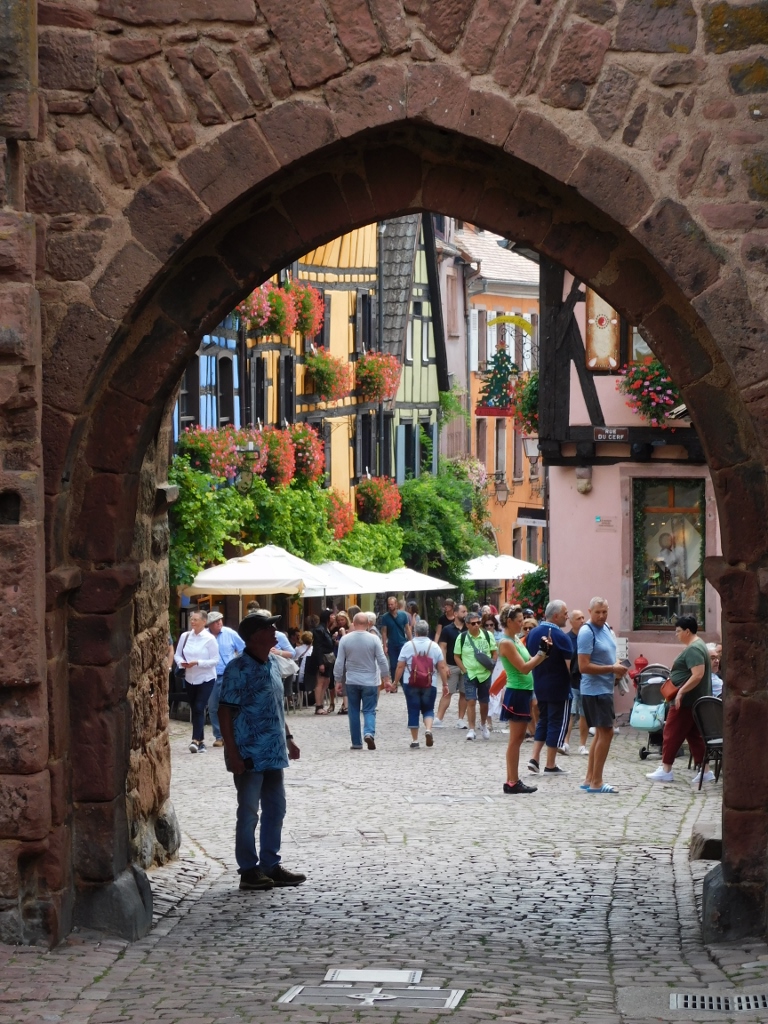 Riquewihr
Riquewihr
The oldest houses in Riquewihr date back to the end of the 15th century, some are from the 16th century, while most of them were built in the 17th century. They were all done in the Rhineland Renaissance style that was predominant in the region of Alsace for a long period of time. Thanks to the fact that this place was not hit too hard during WWII, the damaged houses could be restored easily and over time this became a renowned tourist destination. This is primarily thanks to the beauty of the town itself, while the other important reason is that Riquewihr is situated in the middle of the wine district famous for its Riesling, as well as other kinds of wine. It is usually recommended that the visitors have at least one glass of Riesling when resting from walking around, but... I drove on this day and in such situations, without any exceptions, I do not take anything that contains alcohol. On the other hand, to my great regret, I was in a hurry as well, because there were some more important visits awaiting me on this day, plus I had to return the rented car to the airport in Mulhouse.
But, if somebody goes to Riquewihr, make sure that you have at least 2-3 hours for an easy stroll and a break with or without wine. I only walked down and up the main street, Rue du Général de Gaulle, that extends in the east-west direction, plus I ventured into a couple of side streets. Here are the photos...
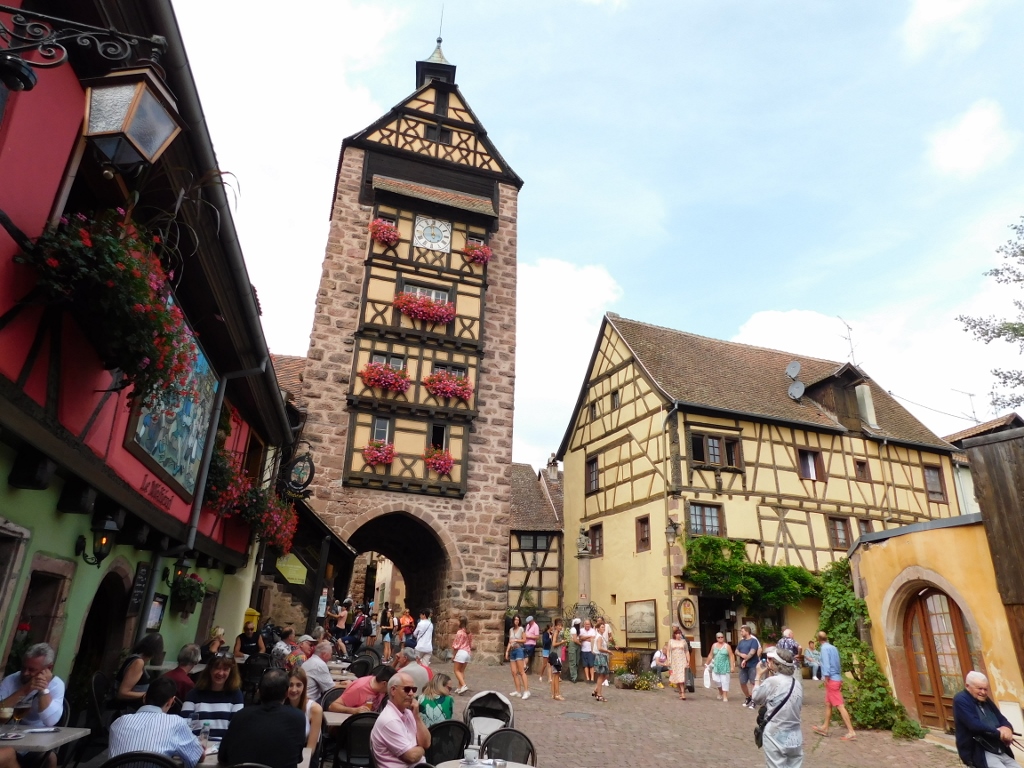 I entered the town using the tunnel that goes through Dolder Tower
I entered the town using the tunnel that goes through Dolder Tower
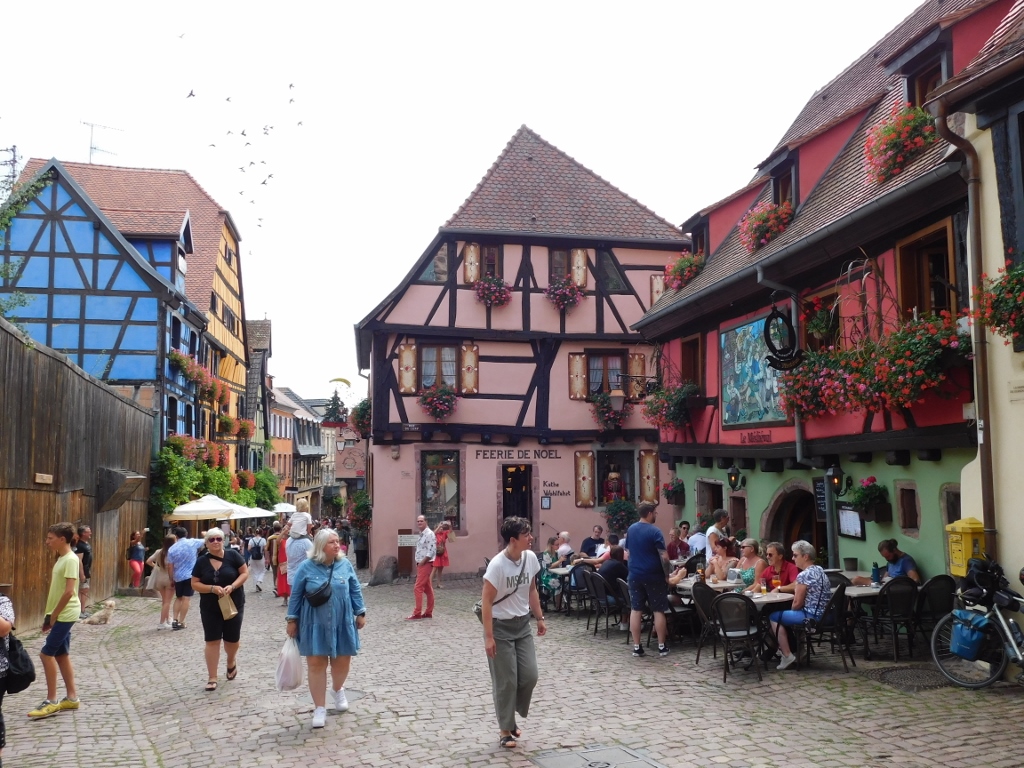 Riquewihr
Riquewihr
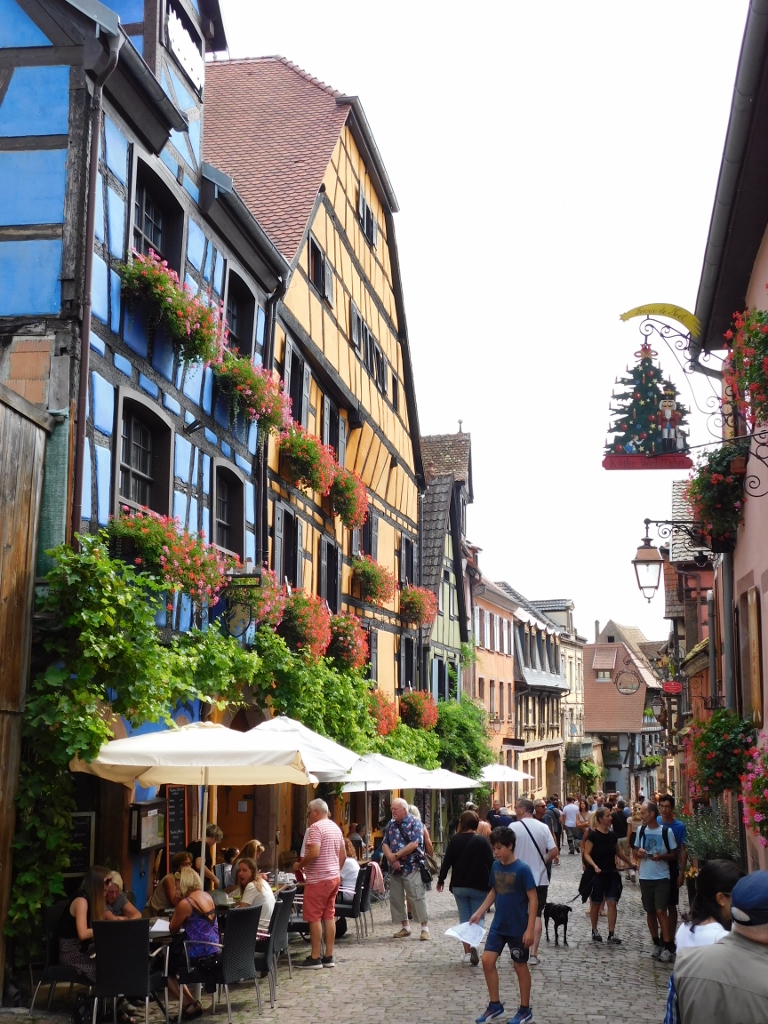 Riquewihr
Riquewihr
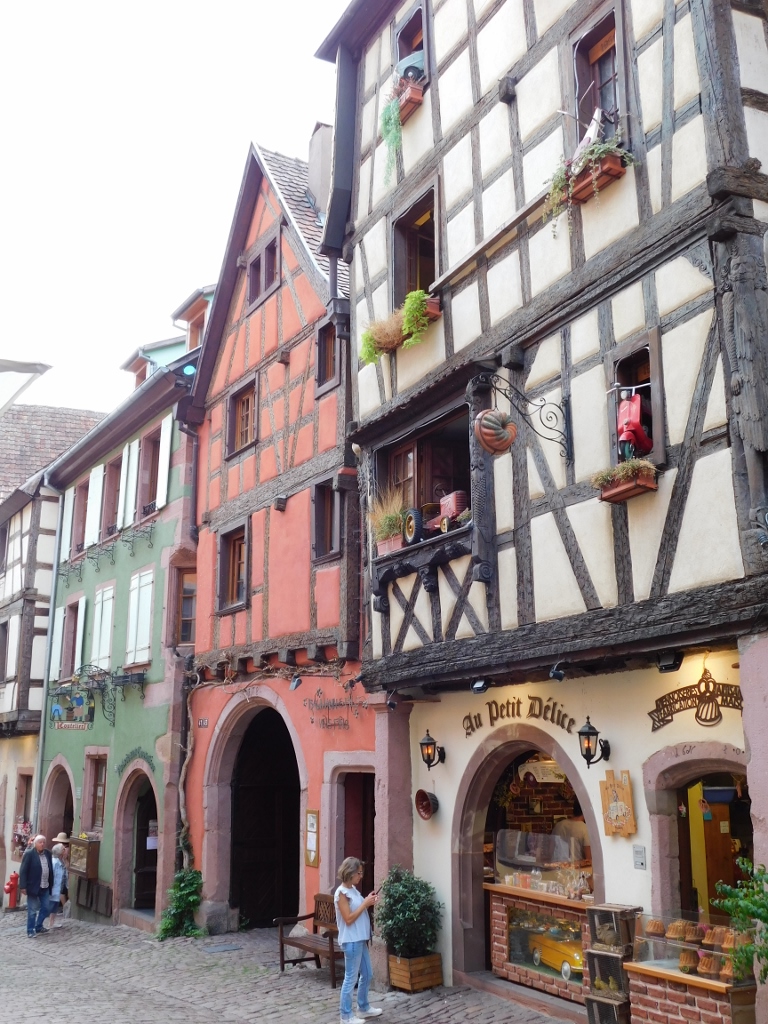 Riquewihr
Riquewihr
Looking at these houses, I had a feeling I was in a fairy tale. I was sure Hansel and Gretel were somewhere around, the sweets could be bought in various shops (it is the 21st century after all) and I hoped only the evil witch was missing.
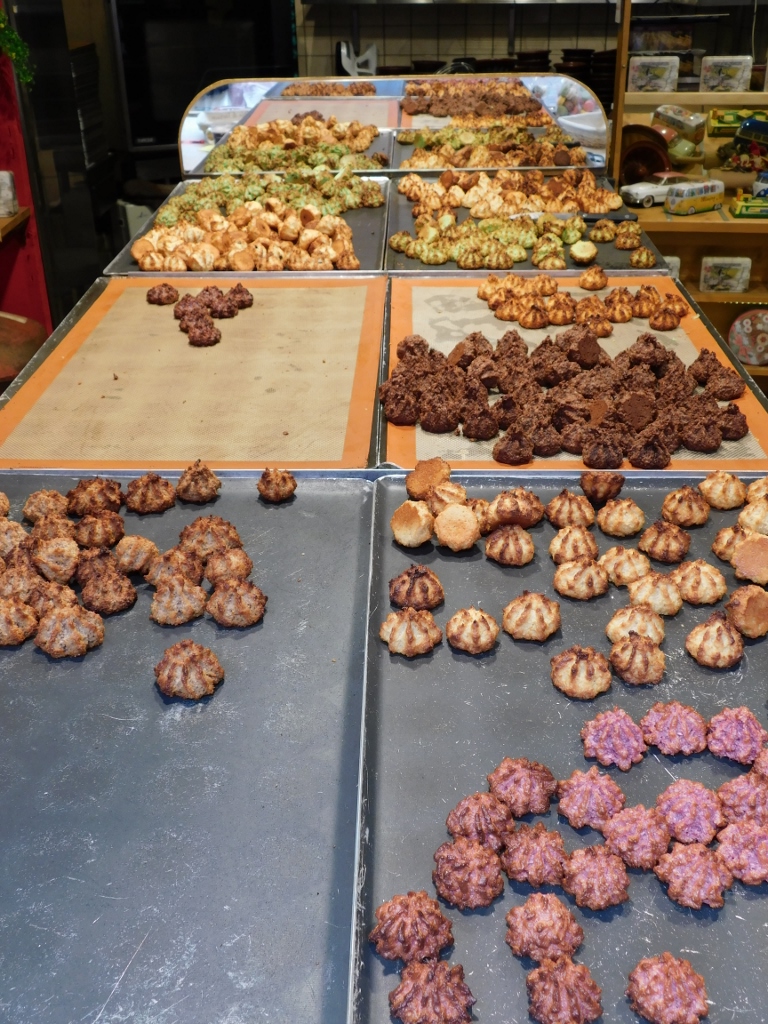 Some of the sweets sold in Riquewihr
Some of the sweets sold in Riquewihr
By the way, upon my return home, I made my own version of the coconut macaroons, so here are both the photo and the recipe:
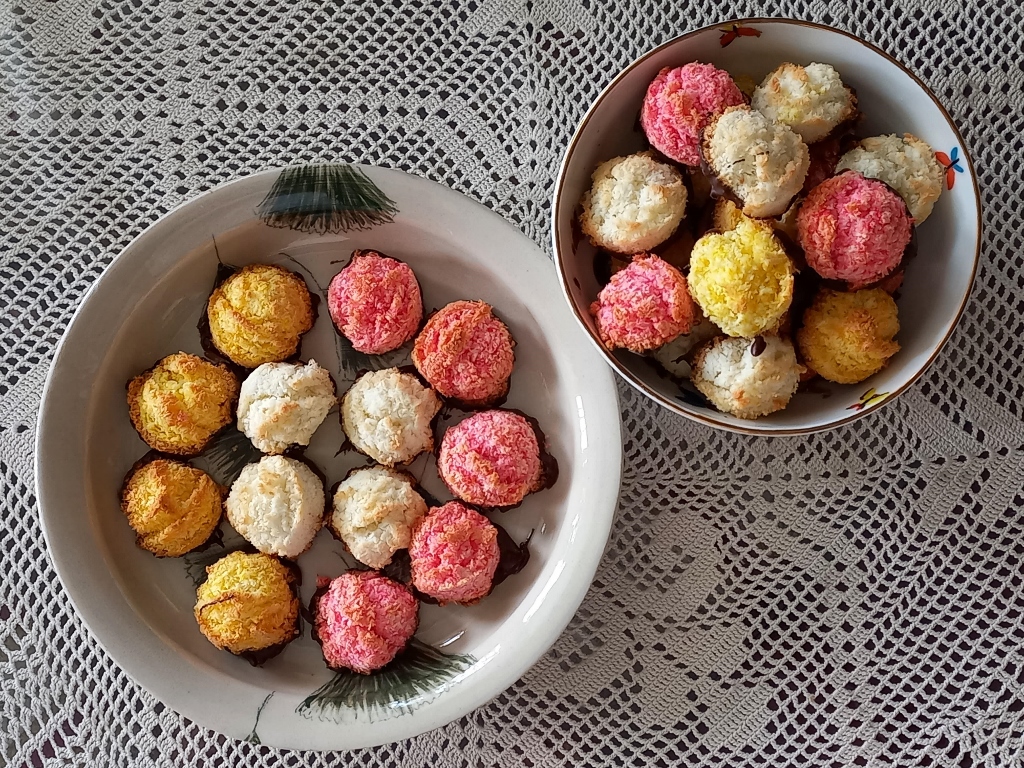 My coconut macaroons served in bowls I make myself
My coconut macaroons served in bowls I make myself
* COCONUT MACAROONS*
- 3 egg whites
- 100 g sugar
- 100 ml double cream
- 60 g melted butter
- 20 g flour
- 6 g vanilla sugar
- a pinch of salt
- 120 g desiccated coconut
- 120 g dark chocolate
Whisk the egg whites and add sugar to them. Once they are well mixed (soft peaks), add the cream, butter, flour, vanilla sugar and salt, and whisk some more until the batter is smooth. Then add the desiccated coconut and using a wooden spoon bring it all together.
Using small spoons or an ice-cream scooper, make small balls and put them on a baking tray covered with baking paper. Bake at 160 degrees C for some 20 minutes. Then get the baking tray out and let it all cool.
Melt the chocolate on medium heat and using a fork dip the bottom of the macaroons into the chocolate. Let the surplus chocolate drip down and then put the macaroon onto a tray covered with baking paper. Put the tray in the fridge for a dozen minutes to let the chocolate get cold.
As you can see from the photo, I left a part f the macaroon batter white, but I also added yellow and red food colours into other two parts. This was just for the sake of playing, but it does look cute.
But, let me continue with my stroll around Riquewihr.
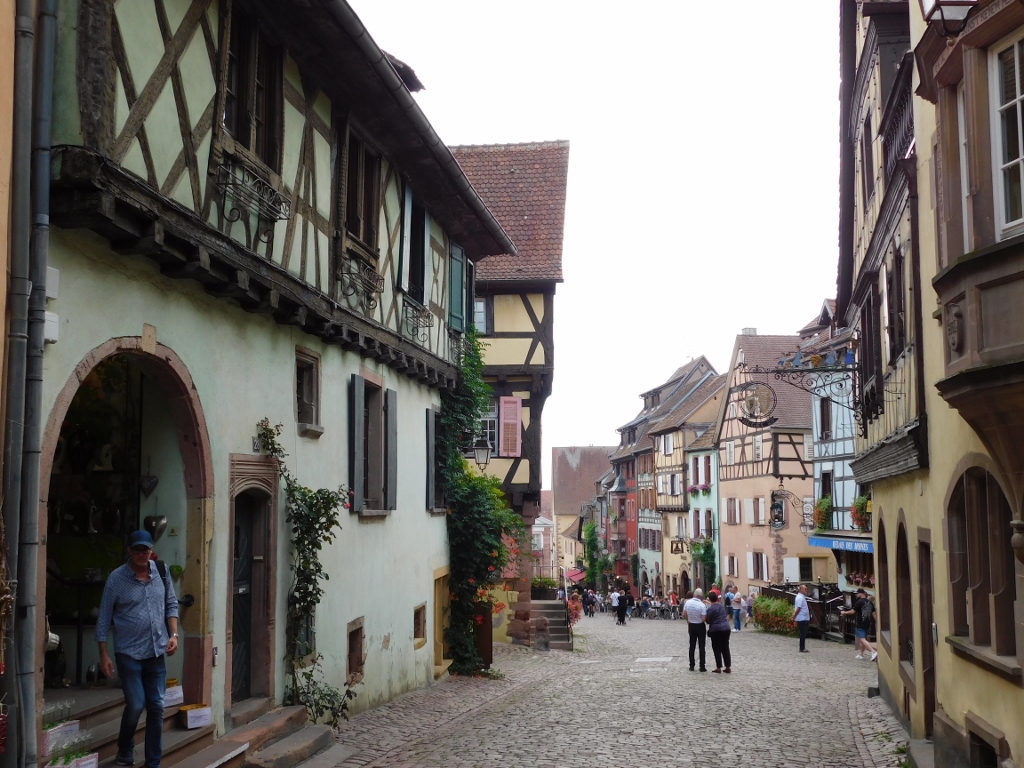 Riquewihr
Riquewihr
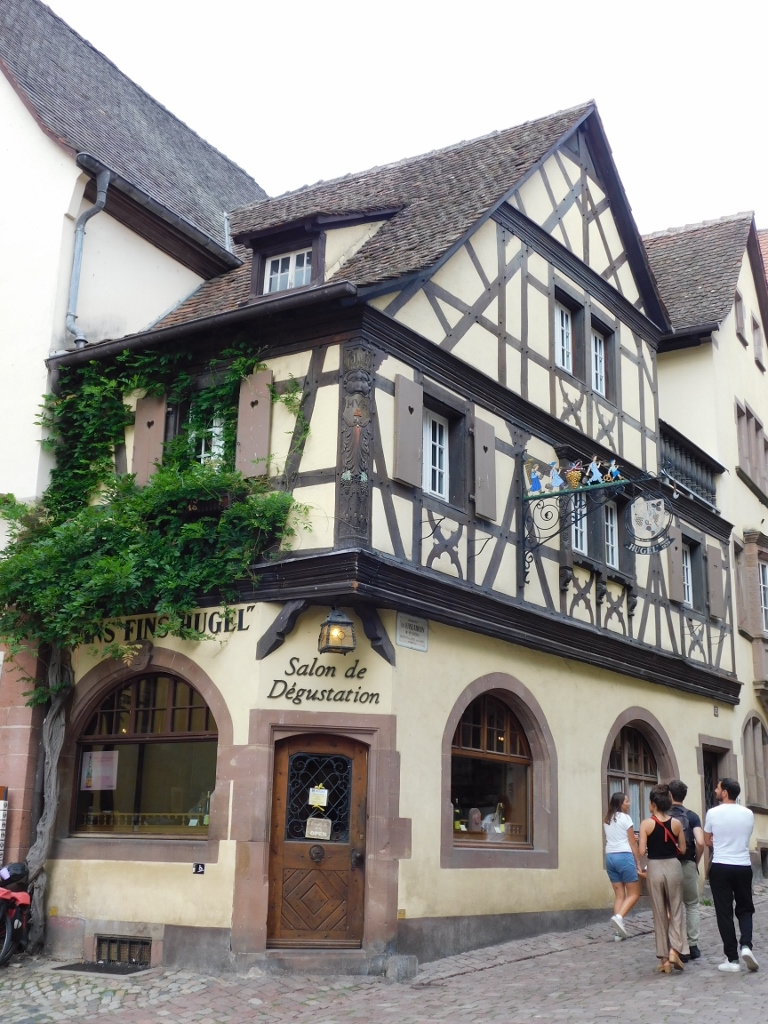 Famille Hugel house from 1494
Famille Hugel house from 1494
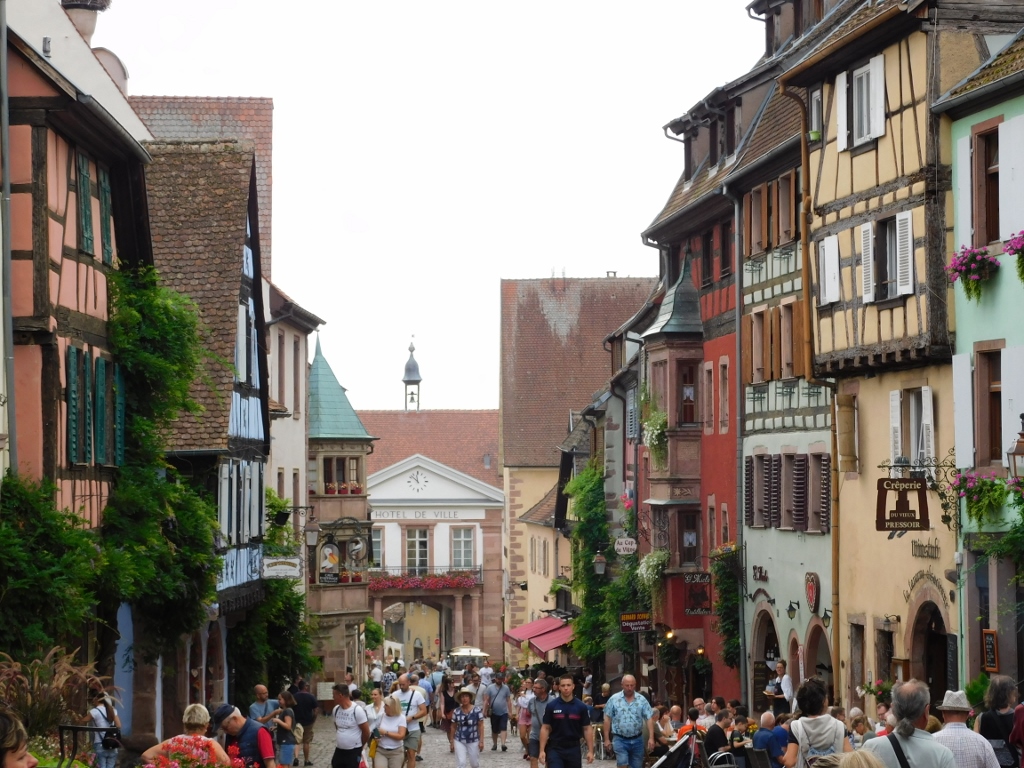 Riquewihr
Riquewihr
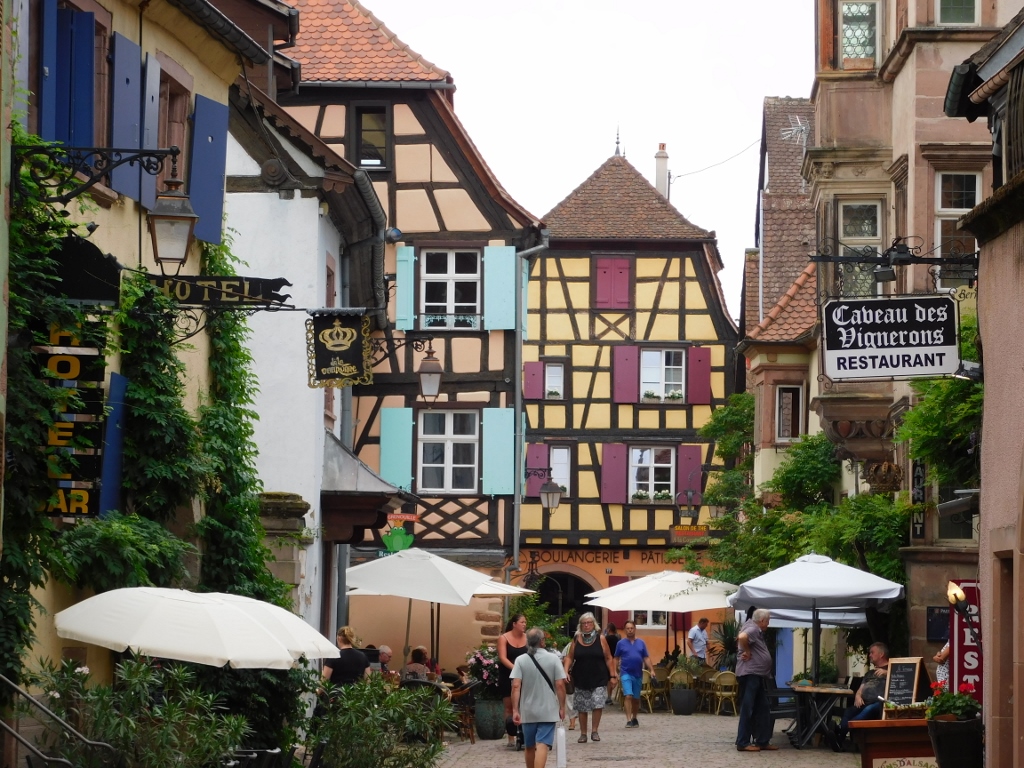 Riquewihr
Riquewihr
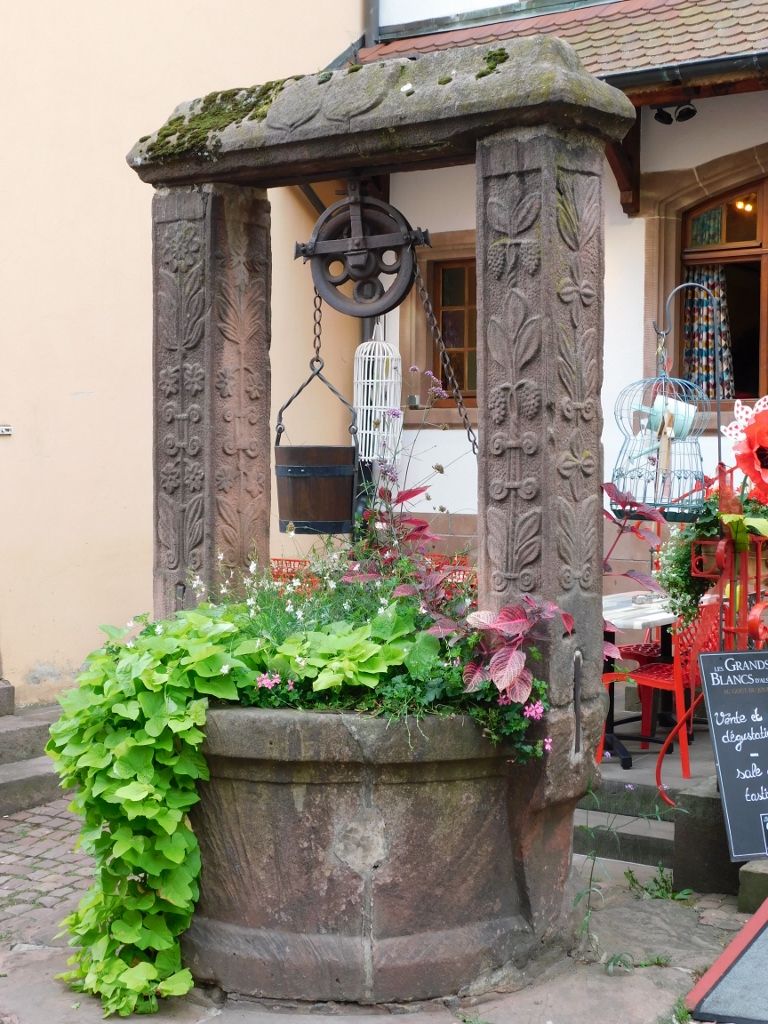 Riquewihr
Riquewihr
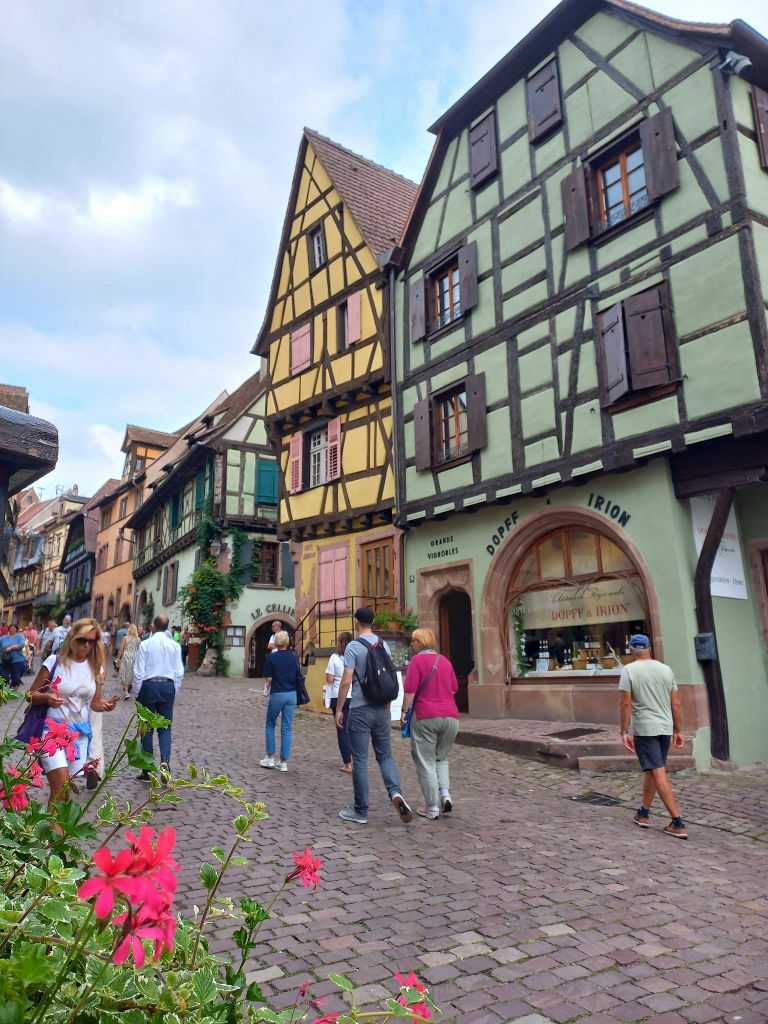 Riquewihr
Riquewihr
 Riquewihr
Riquewihr
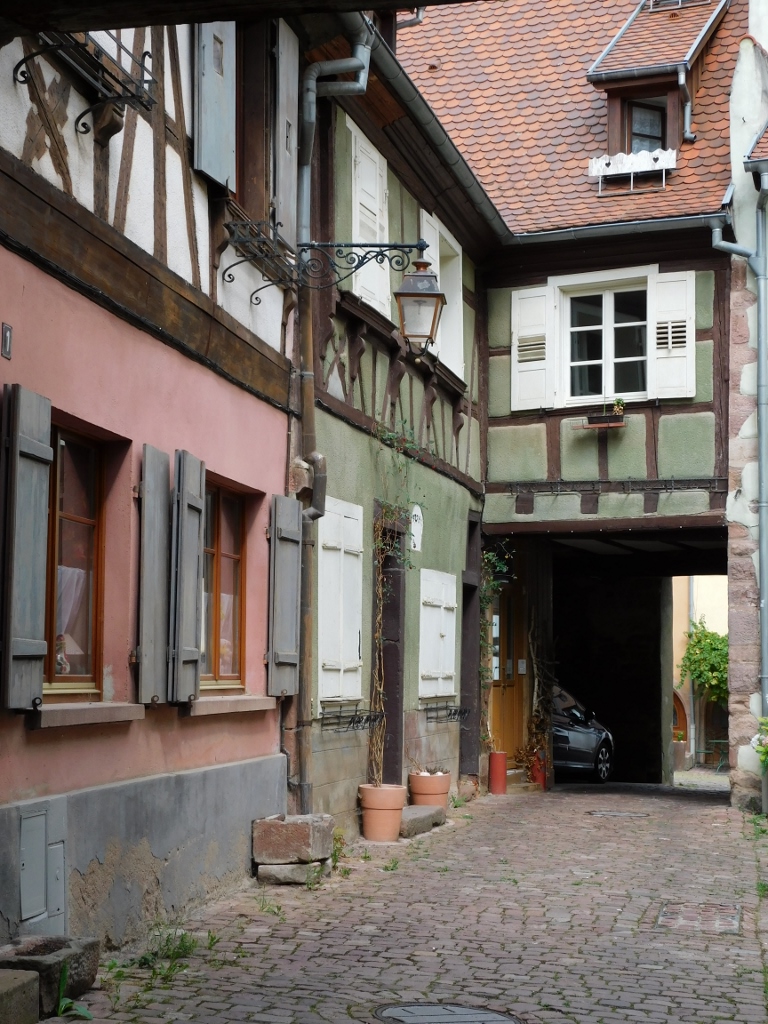 Riquewihr
Riquewihr
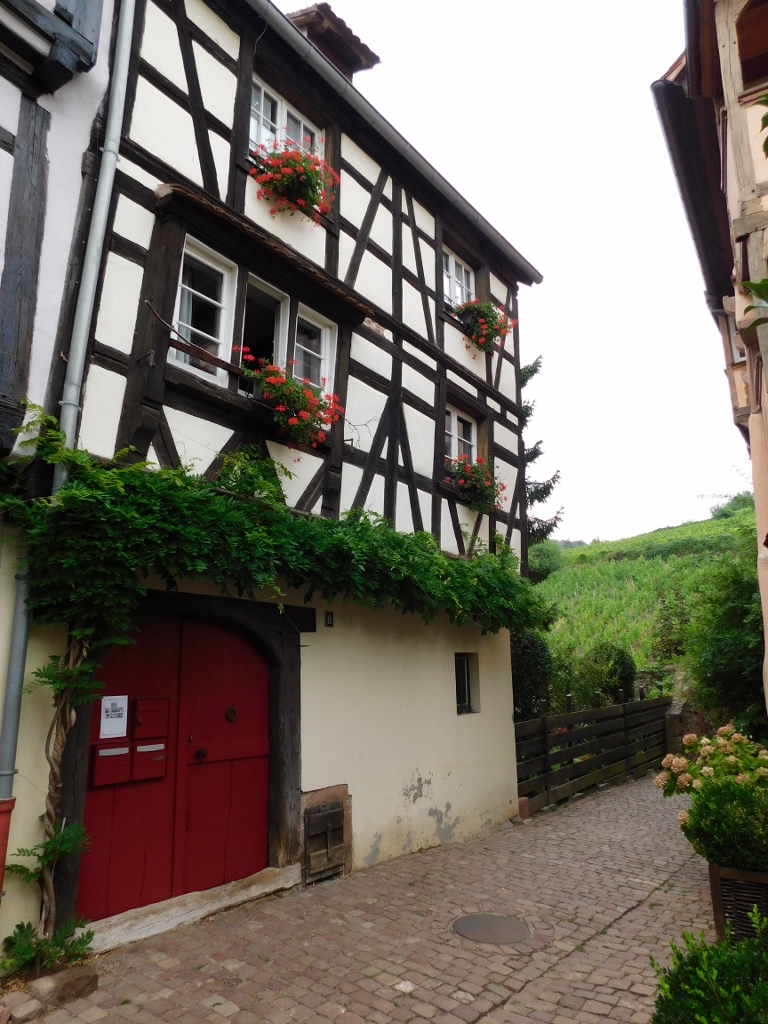 Riquewihr
Riquewihr
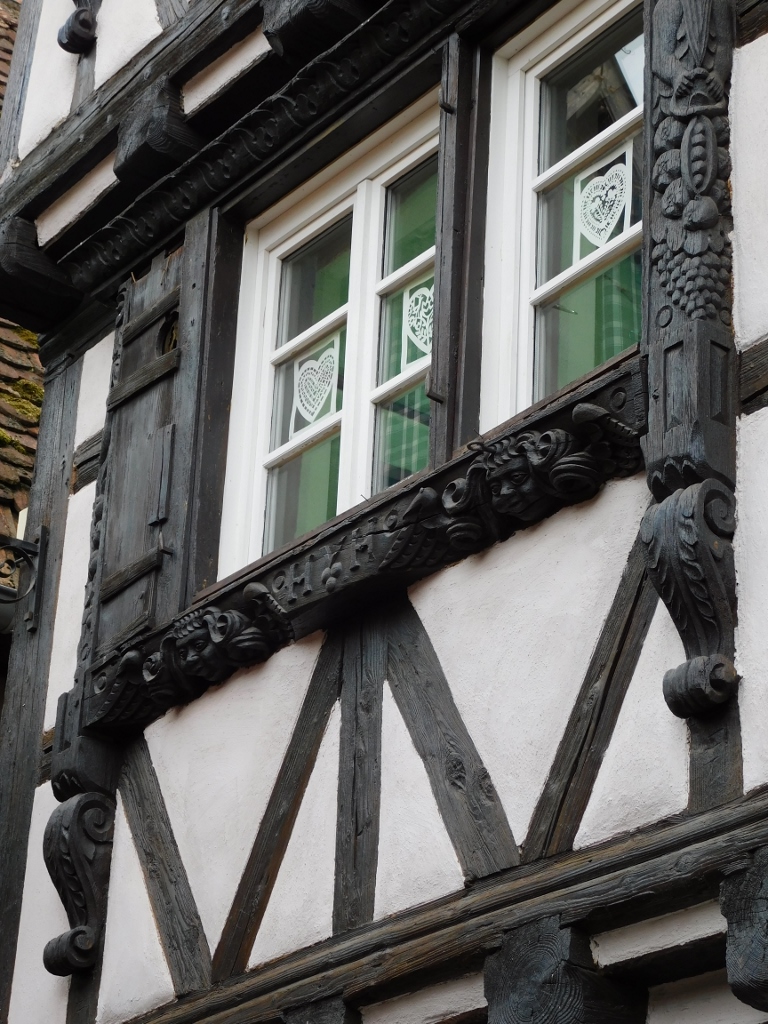 Riquewihr
Riquewihr
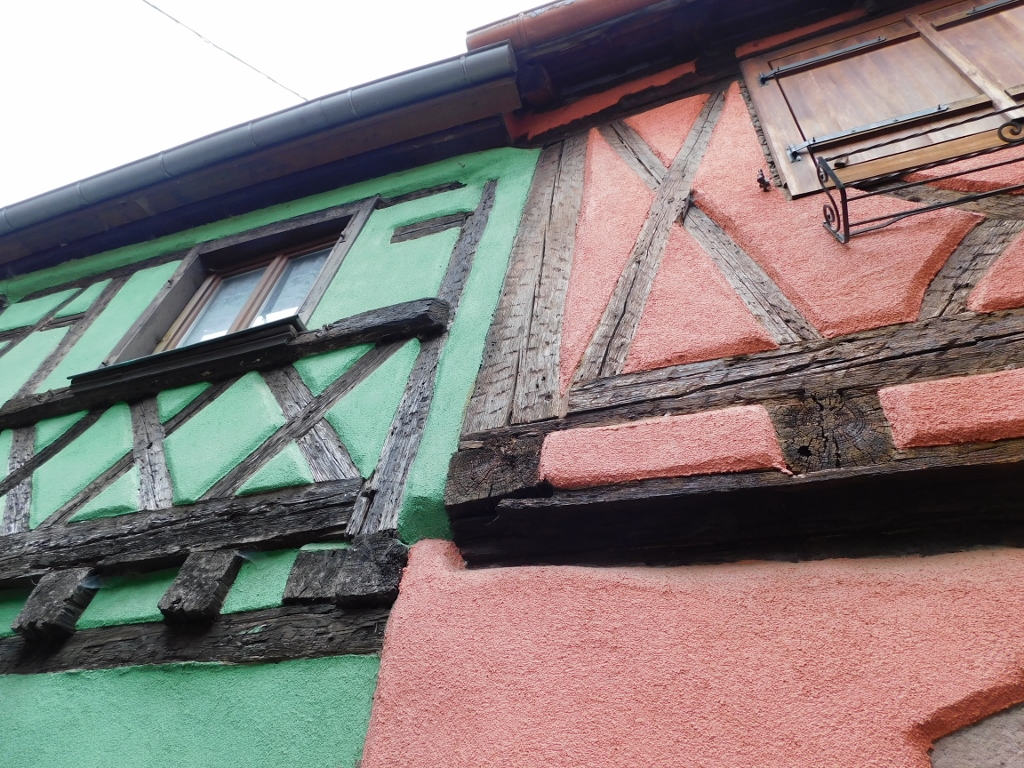 Riquewihr
Riquewihr
After dealing with some details I noticed around the town, I started to return in the direction of Dolder Tower, because this was the most convenient route to get back to the car.
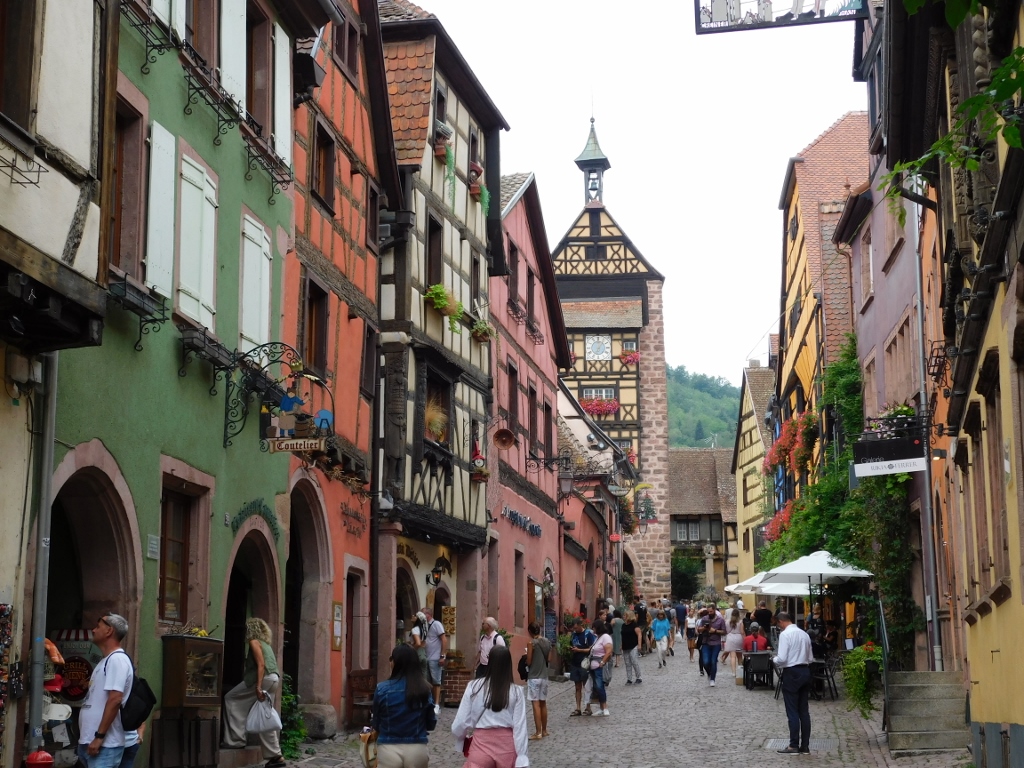 Riquewihr
Riquewihr
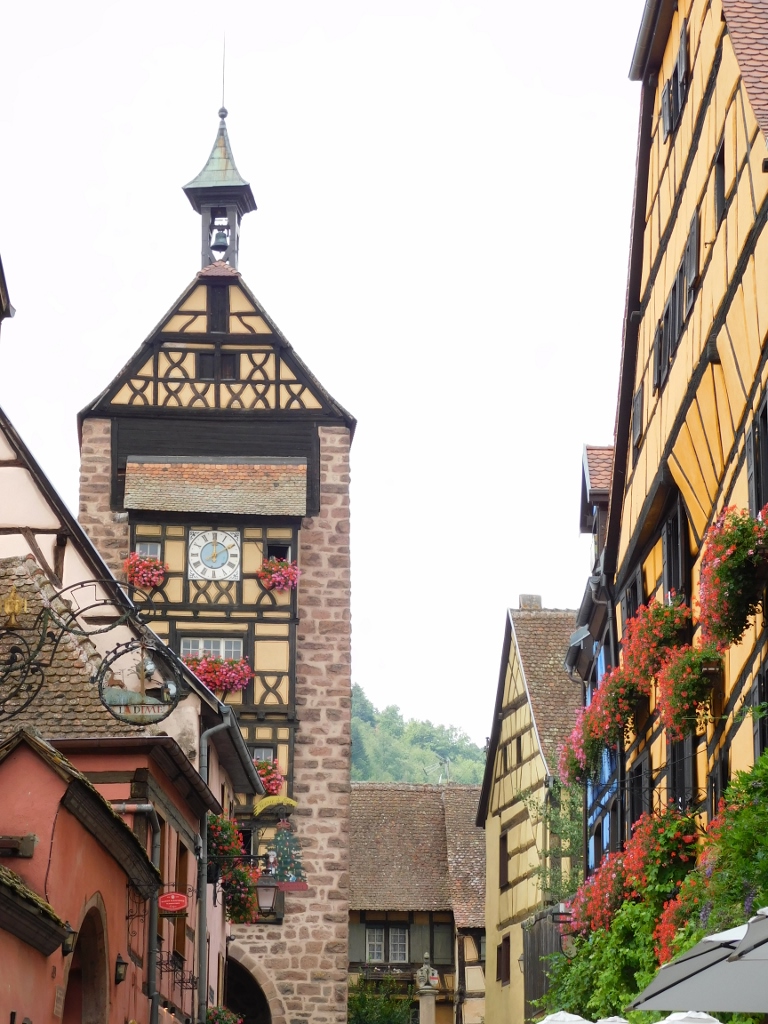 Riquewihr
Riquewihr
The town is surrounded by walls and some parts of them were built around 1500. As I’ve already mentioned, the town is situated in the middle of a vine-growing area and so vineyards start as soon as the urban perimeter ends.
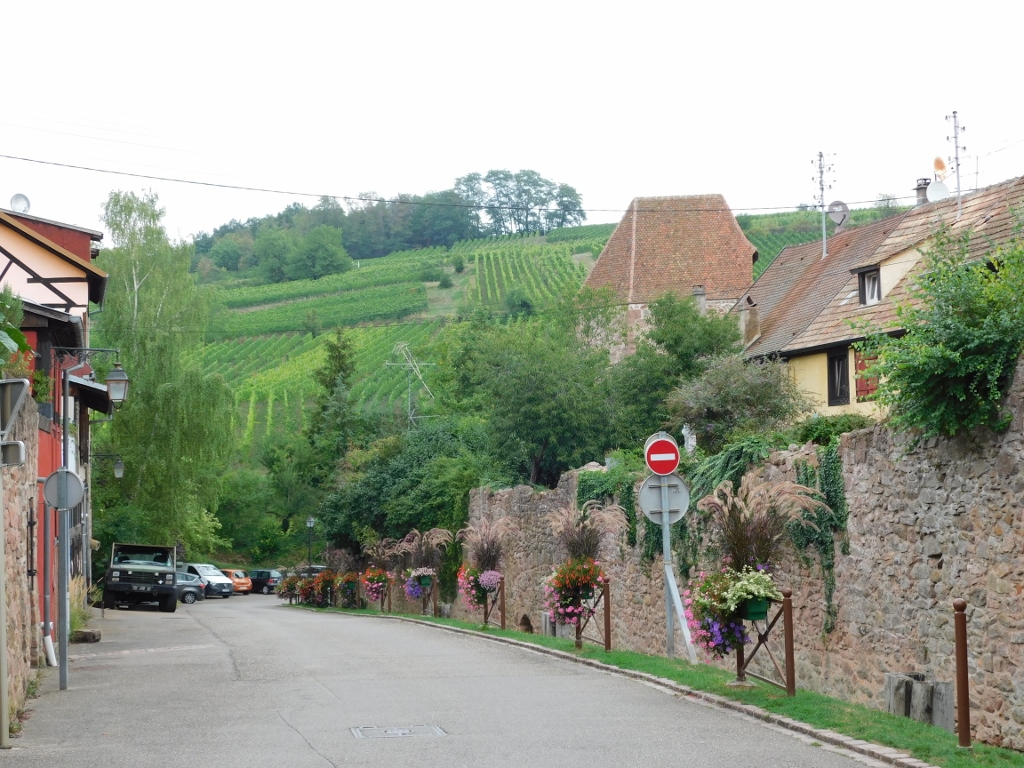 Direct proximity of Riquewihr
Direct proximity of Riquewihr
Having reached the car that was waiting for me at the parking lot, once again I took a photo of the picturesque parts of this lovely town.
 Riquewihr
Riquewihr